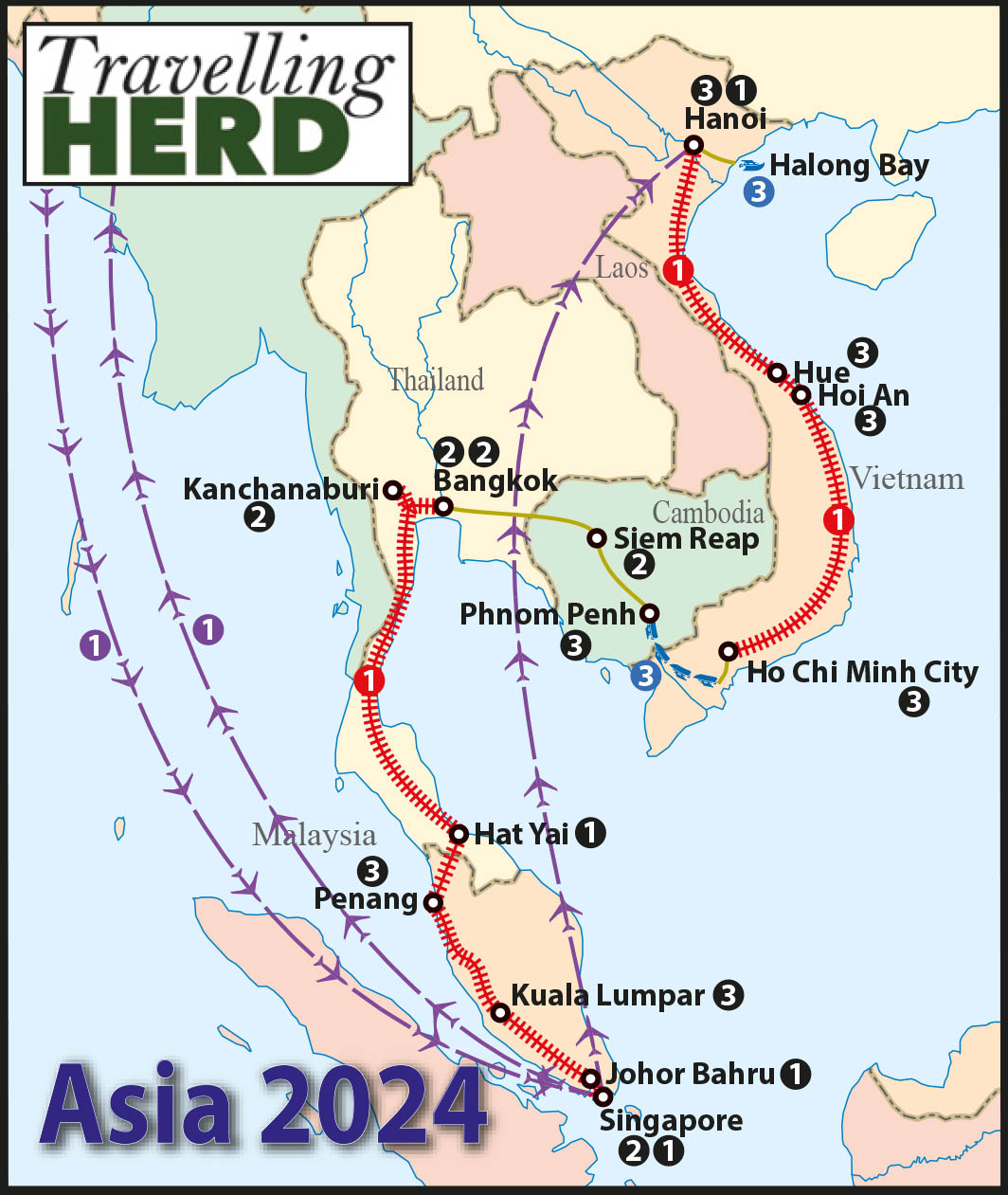Read this blog: The one where we travel on the steepest tunnel train track in the world
Wednesday 9th and Thursday 10th April 2024
Using a combination of the Penang tourist map from the hotel and GPSmyCity, Robert worked out a route taking in some of the major sights. First we walked to the Church of the Assumption, the third oldest Catholic church in Malaysia. In front stands a small, open, domed Shrine of Our Lady of Fatima with vibrant blue stained glass which is reserved for private prayer.
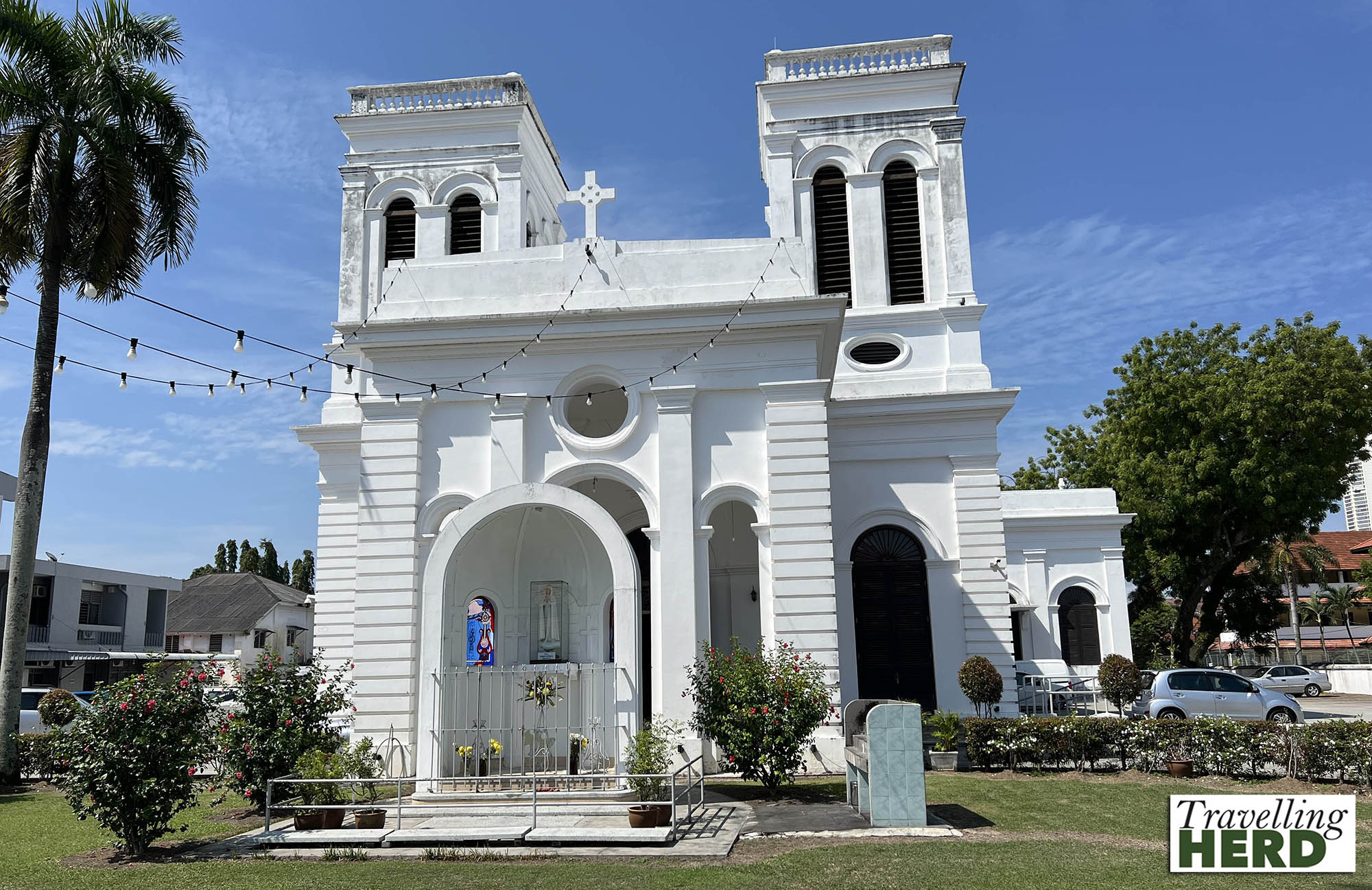
A church was originally established here in 1786, but the population of George Town increased steadily and in 1860 work started on the current cruciform church with two bell towers. It opened the following year in 1861.
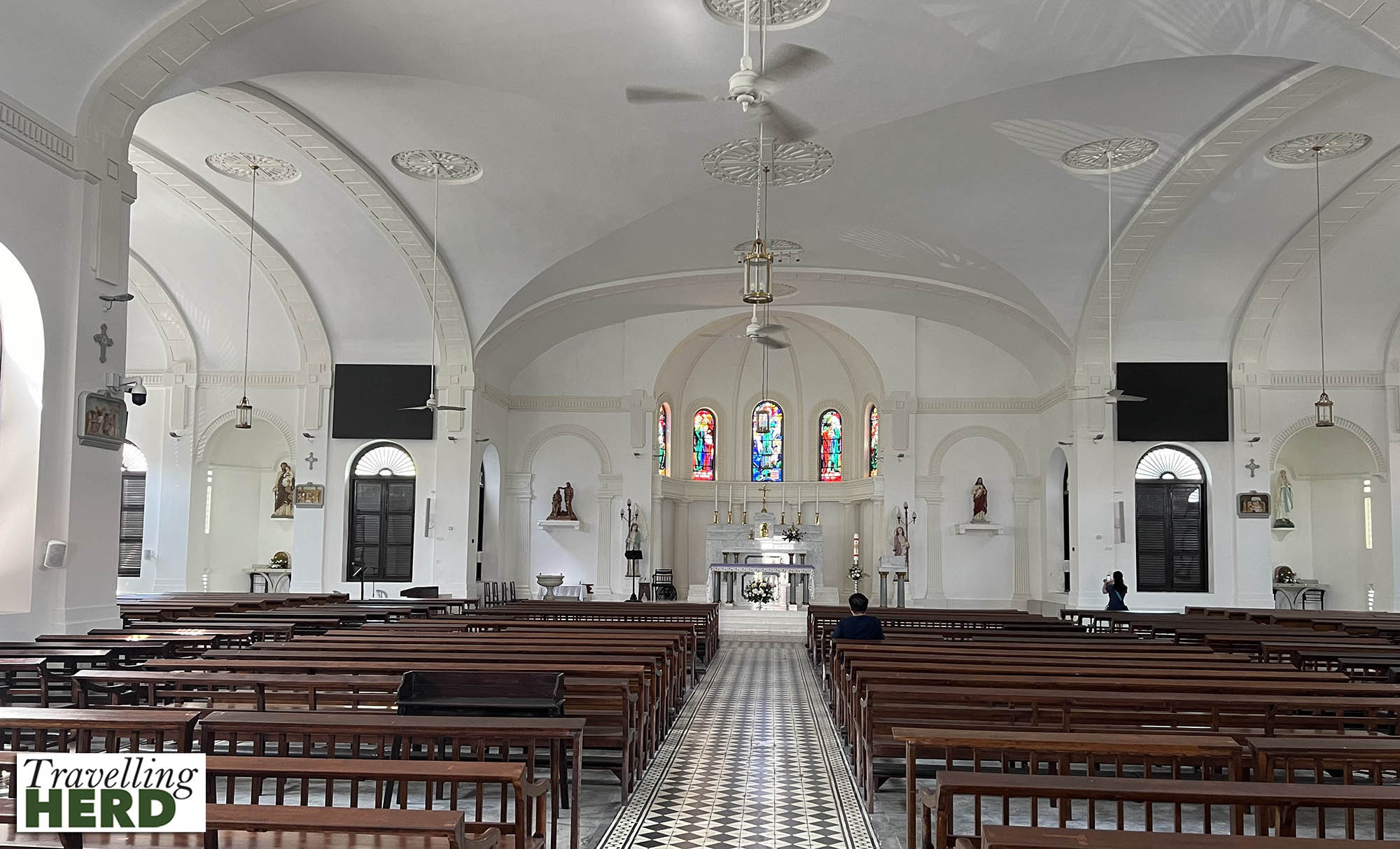
Next we passed St George’s Church. Built in 1816, this is the oldest purpose-built Anglican Church in South East Asia. A sign outside told us that it was closed for the public holiday. Since Ramadan 2024 began late on March 11 with the first fasting day being March 12, in most countries the three days of Eid al-Fitr were due to start on April 10th 2024. There were therefore quite a lot of businesses and places closed during our visit.

Built by the British and completed in the 1880s, the beautiful yellow and white Town Hall is the city’s oldest municipal building, as it once housed the Municipal Commission.
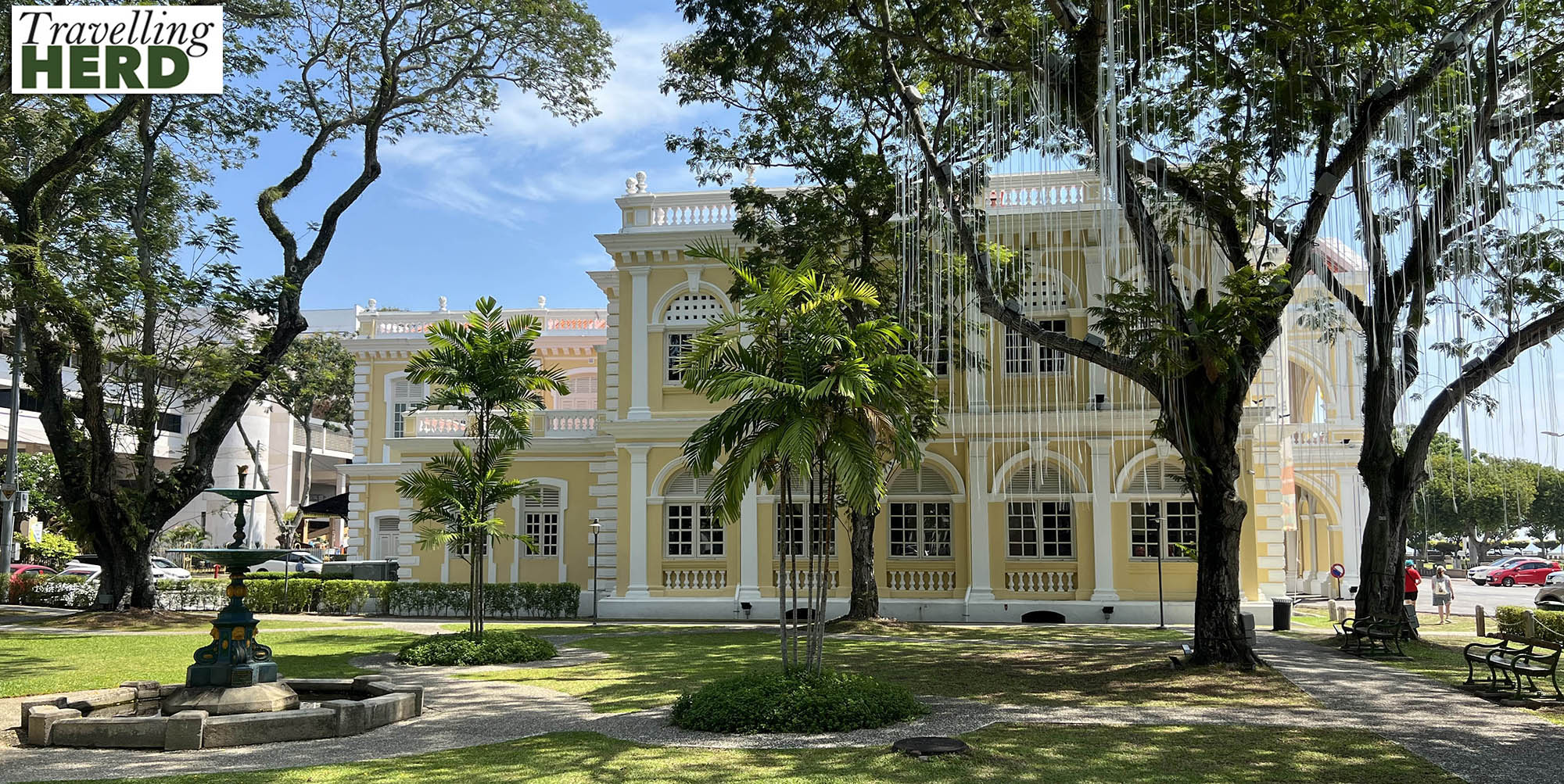
However, the administrative offices were transferred to the adjacent City Hall when that was completed in 1903. This building was originally known as the Municipal Offices as the name City Hall only dates back to 1957 when George Town was granted city status. It is an imposing combination of Edwardian Baroque and Palladian styles.
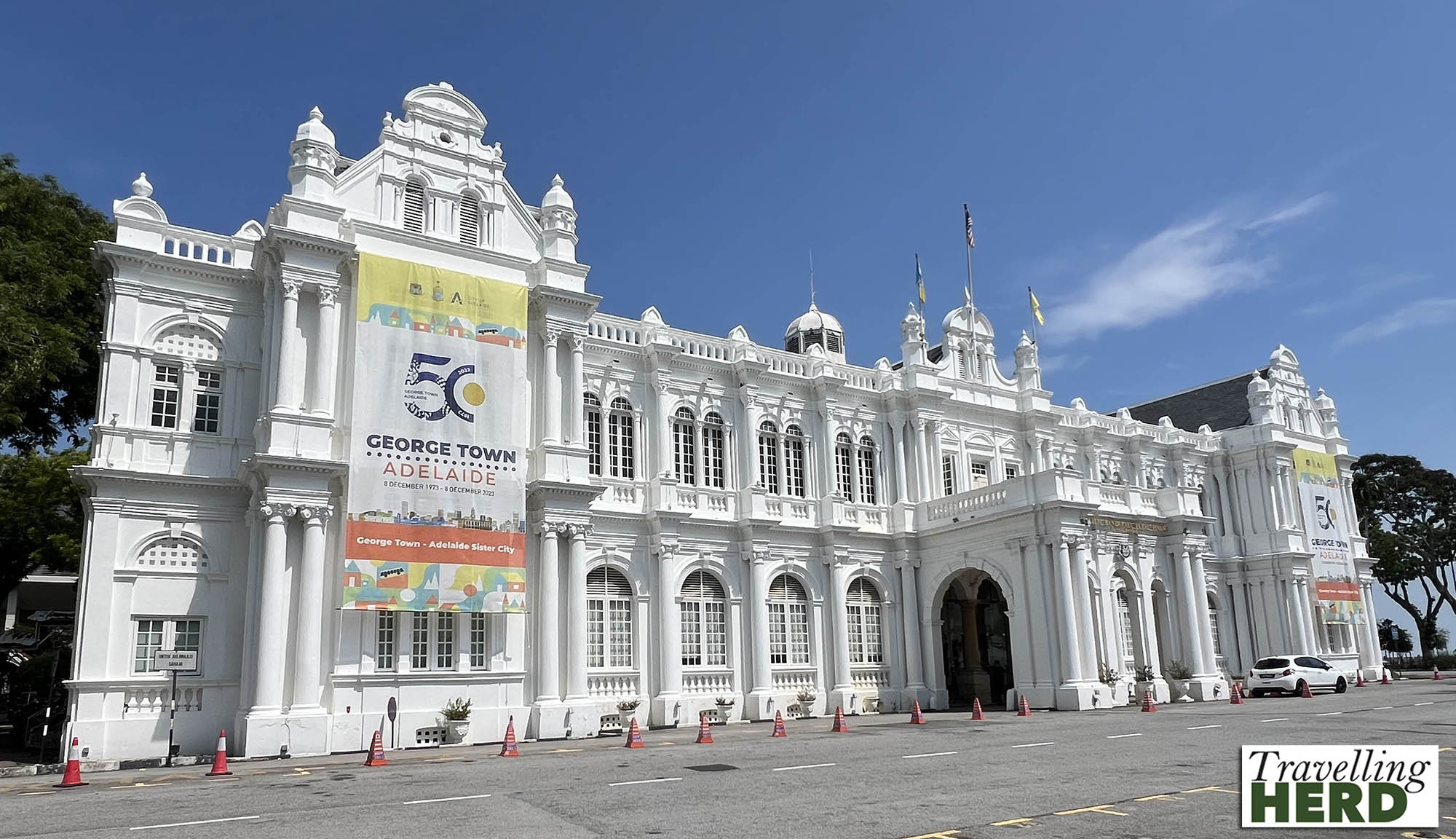
On the Esplanade, in front of City Hall is the Cenotaph, designed as a scaled down version of the one on Whitehall in London. It was originally erected in 1929 to honour the Allied servicemen from Penang who died in the Great War but was subsequently destroyed by Allied bombing during the Japanese occupation.
After the end of WWII, the cenotaph was painstakingly reconstructed using some of the salvageable fragments of the original. It has been used for commemorative services since the 1948 Remembrance Day.
A smaller memorial plaque was added by the Penang Veterans Association, commemorating those who died in World War II, including PoWs who worked on the Thailand-Burma Railway; the Malayan Emergency and subsequent re-insurgency and the Indonesia-Malaysia confrontation.
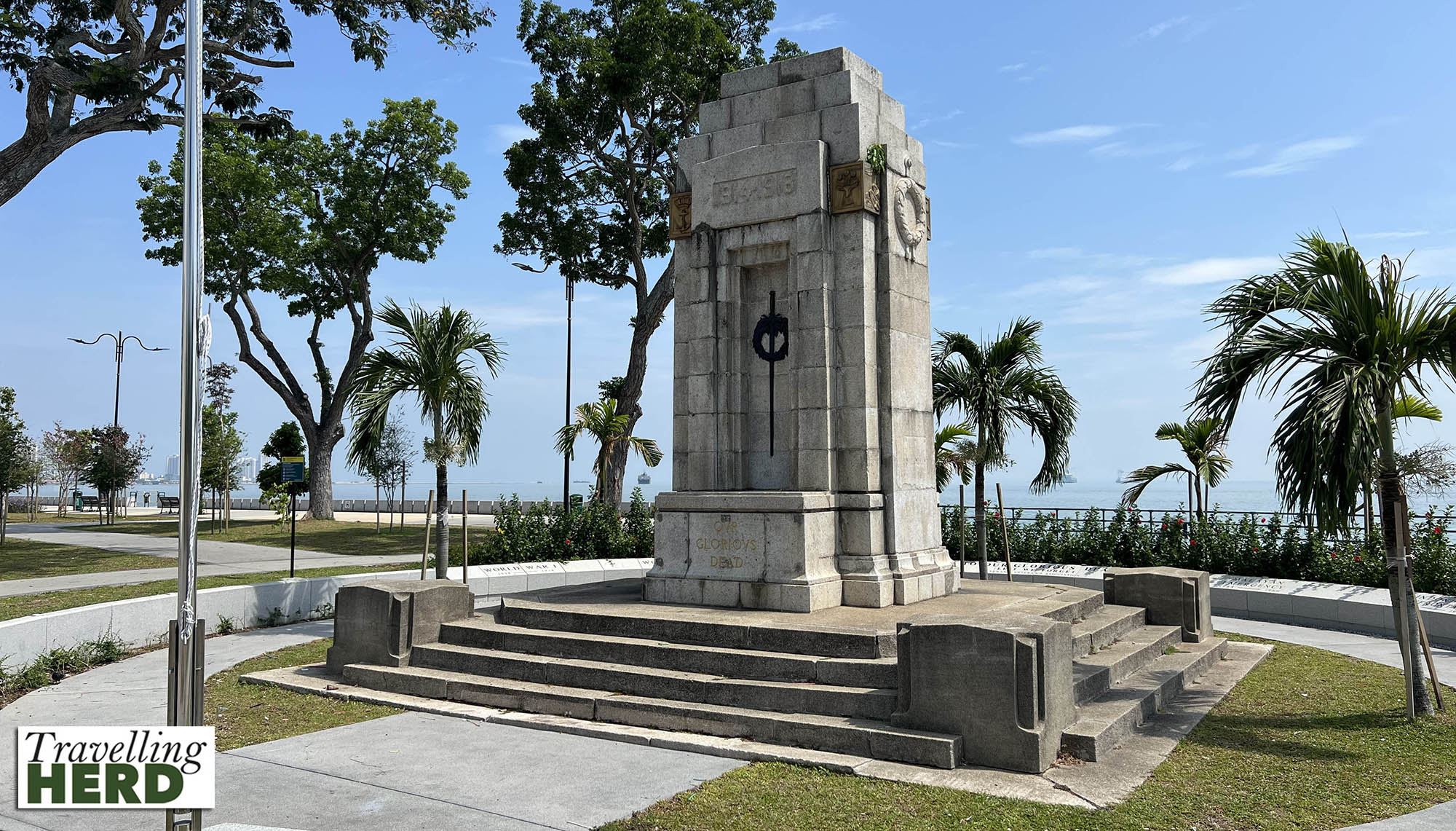
The Esplanade is a scenic promenade with views along the coast.
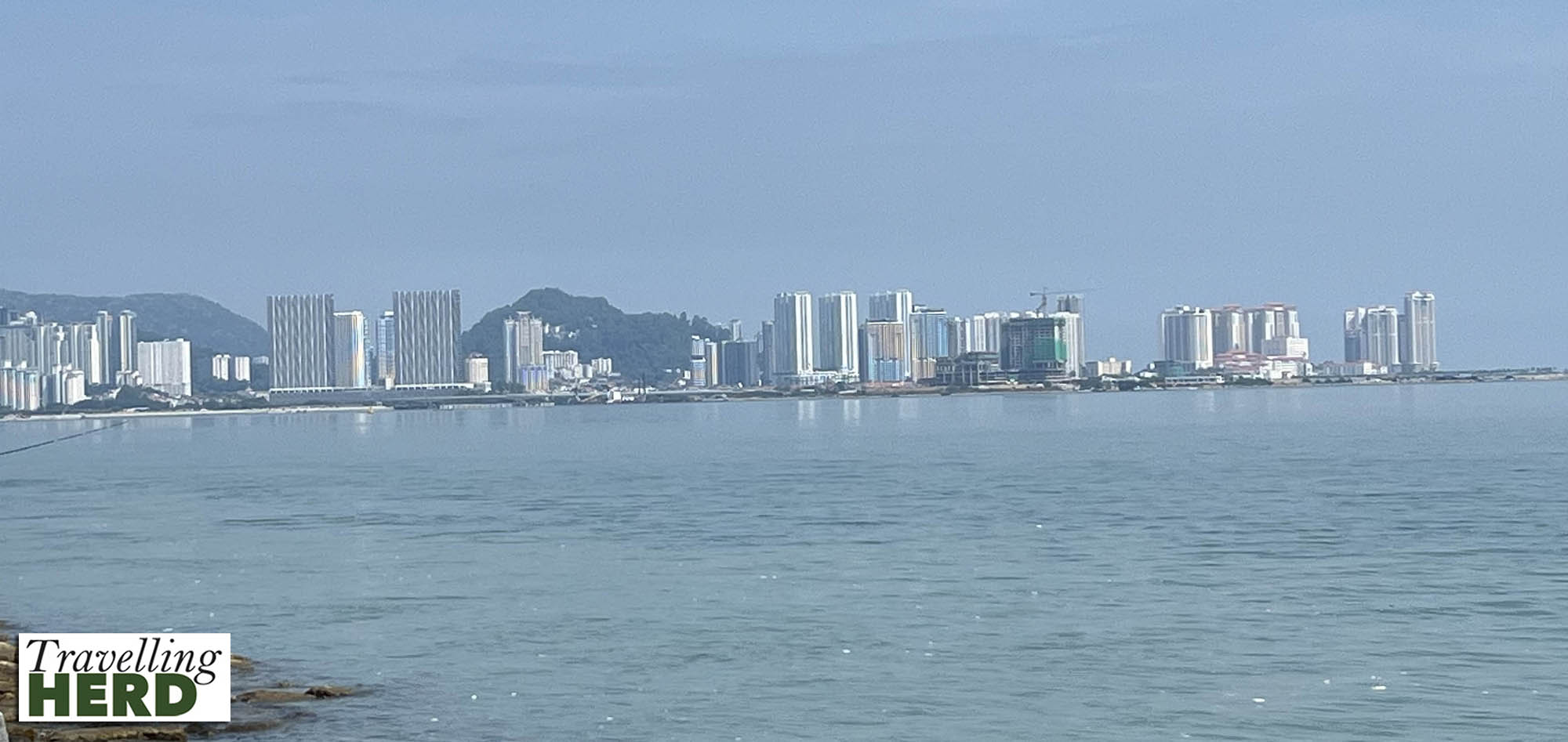
We walked along the Esplanade to Fort Cornwallis which was built in a star shape in 1804 as a defence against possible attack during the Napoleonic Wars – a threat which never, in fact, materialised.
It stands on the site where Captain Francis Light landed in 1786 to take possession of Penang Island on behalf of the British East India Company and for the first 100 years it was home to both the East India Company and British troops.
The fort has never actually seen any hostilities, even when the Japanese invaded and can now be used as a wedding venue.
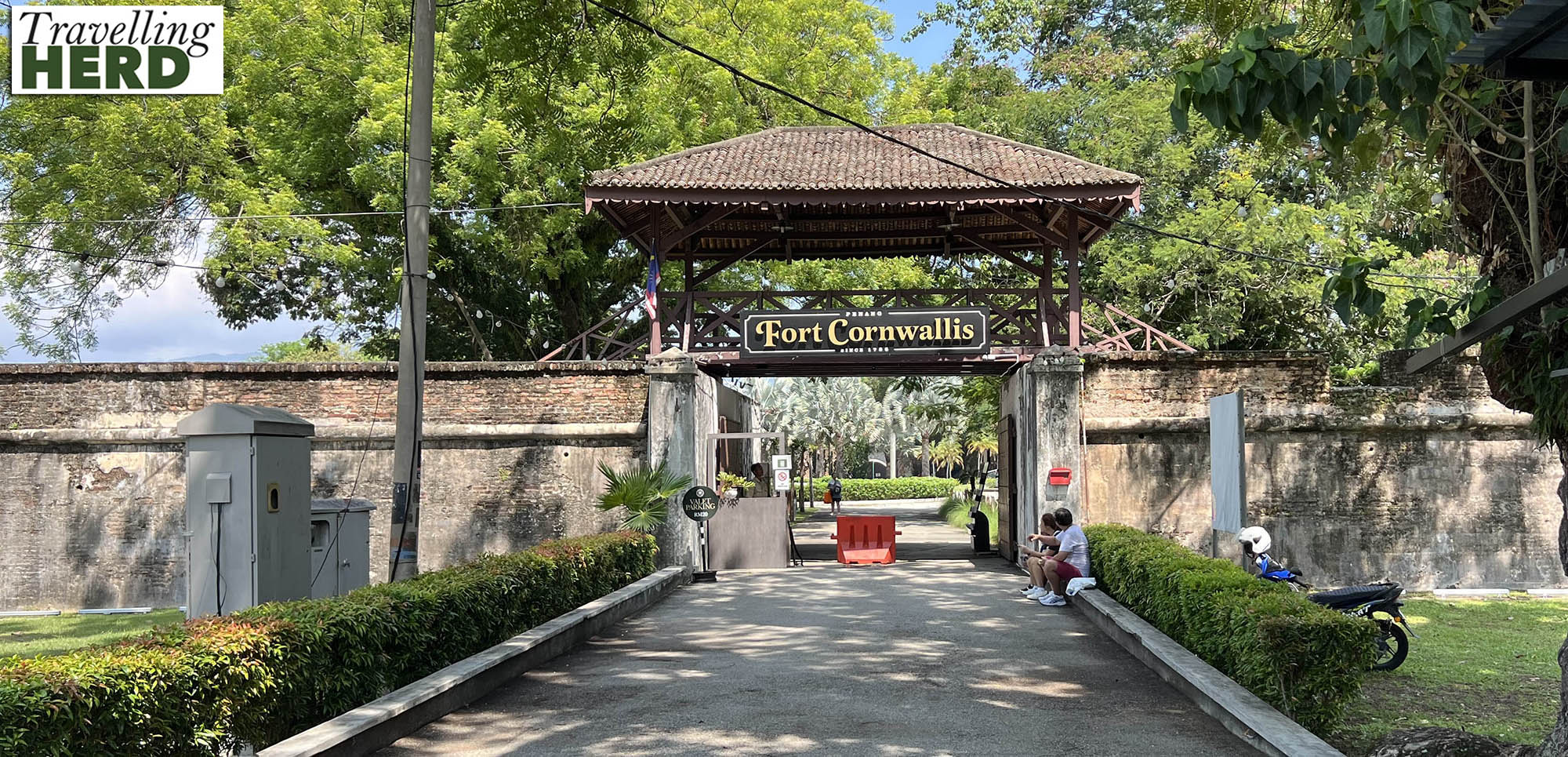
The initial timber buildings started to be replaced with brick constructions in 1793. Originally the fort was surrounded by a moat which ranged from between 9 and 20 metres wide. It is not obvious how the moat was fed but it is thought it was filled by a combination of rainwater and the high water table here. So close to the sea the water would have been brackish and the level may have risen and fallen with the tides.
The ground within the fort is lower than the level of the moat. There are storerooms along one side which were built around 1800. The gunpowder room is just visible on the left of the photo.

Inside the fort, some railway tracks remain which would have been used to transport goods to the stores.
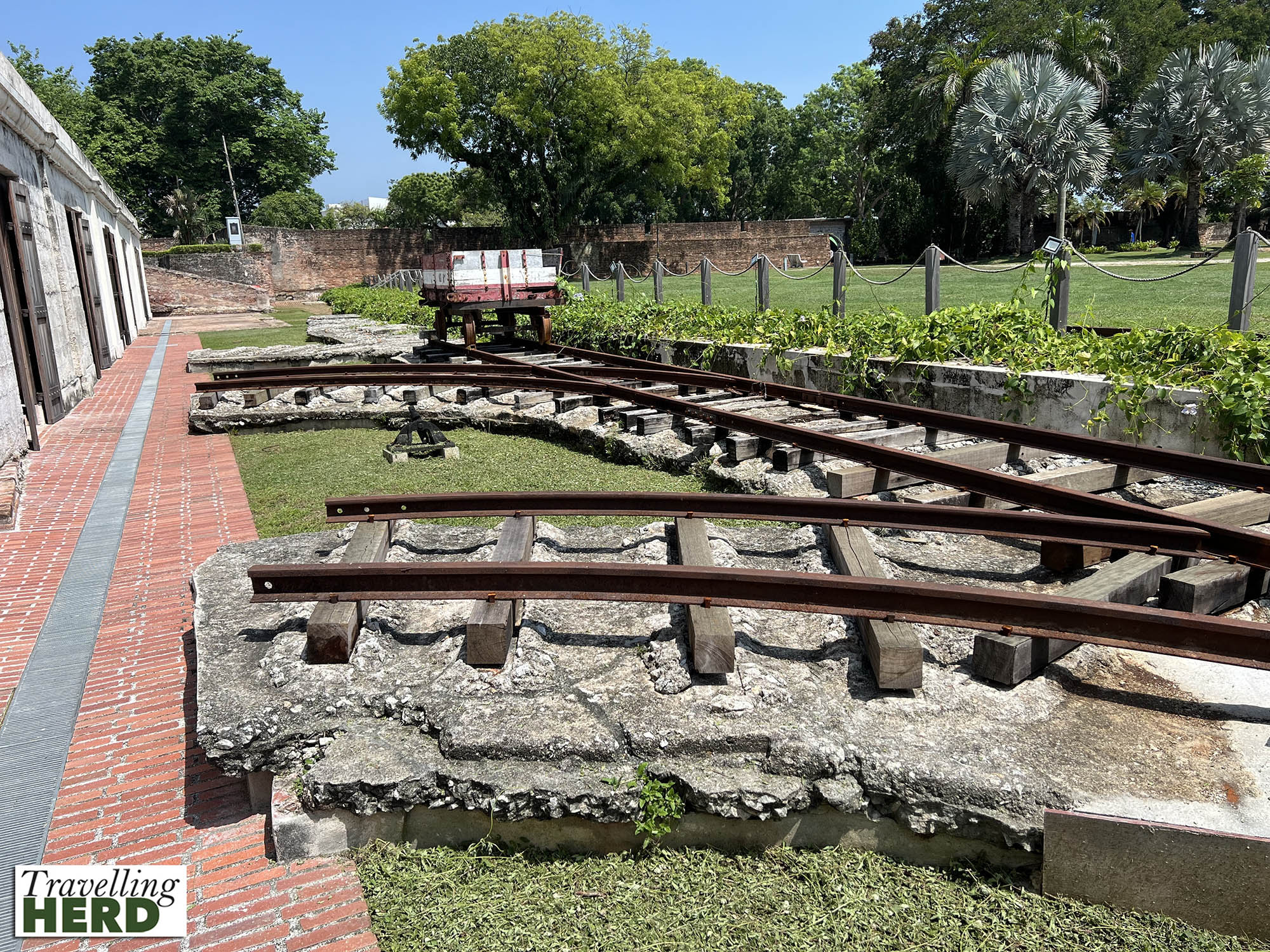
Following a malaria outbreak, the moat was filled in between 1921 and 1922 but afterwards there was some flooding suggesting that the moat had previously acted as a soak away for floodwaters. Accurate records of the position of the moat exist and work is now underway to reinstate it. Blue lines have been painted across the pavement and roads to indicate where it should go.
Within the fort stands the Fort Cornwallis Lighthouse which was first built in 1882 but was rebuilt in 1914 with a steel framework. It is now 69 feet high and the base of the original light house still remains.
The flagstaff nearby looks like a ship’s mast and predates the lighthouse. First semaphore and then telegraph communications were used between Penang Hill and the fort to raise the alert about approaching shipping. When the flagstaff was rebuilt in 1884 it included a small lighthouse visible half way up.
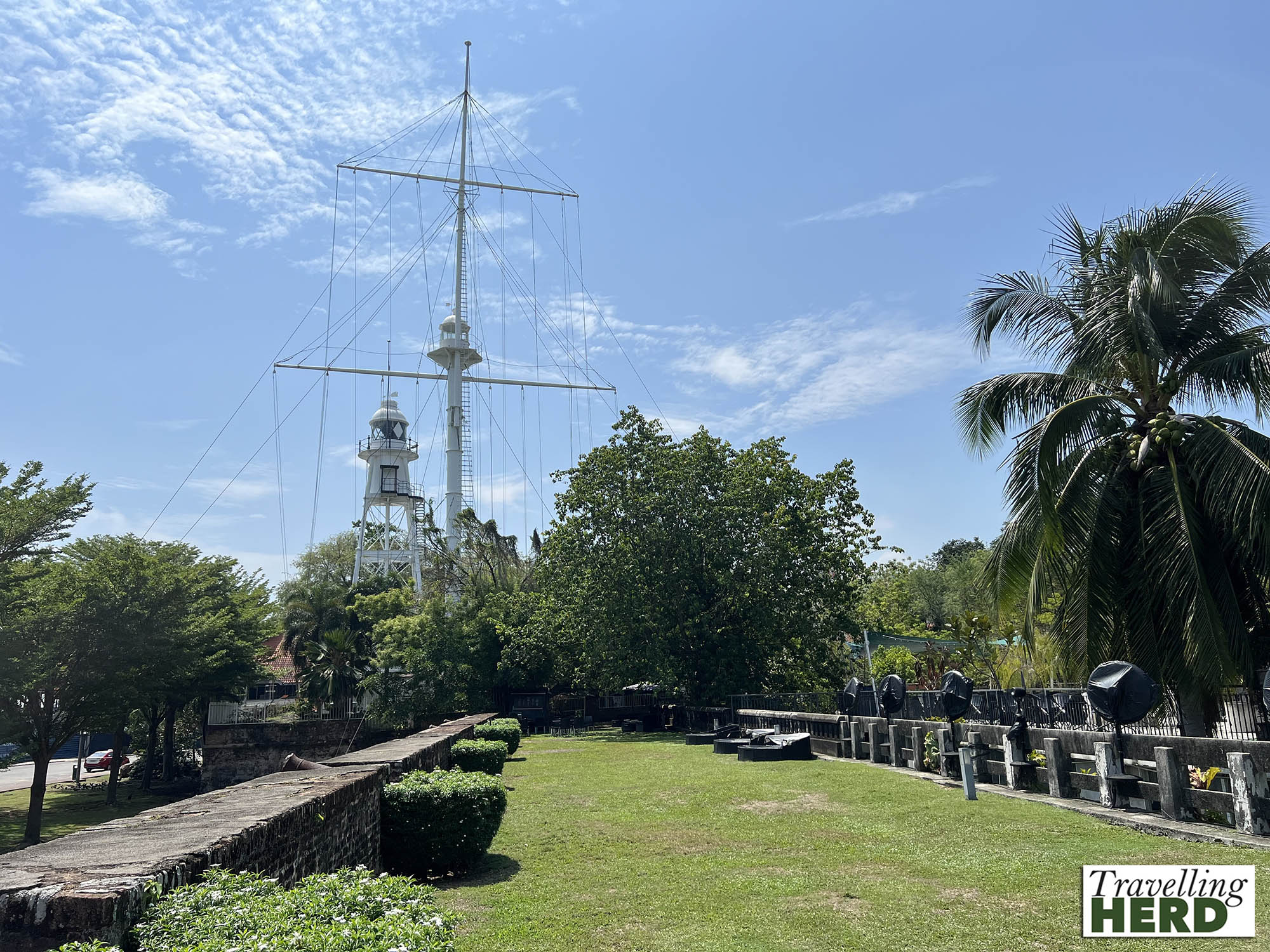
Just outside the fort stands the Queen Victoria Memorial Clock Tower sometimes called the Queen Victoria Jubilee Clock Tower. The Moorish-style clocktower was commissioned by a Penang Chinese millionaire, Cheah Chen Eok, to commemorate the Diamond Jubilee of Queen Victoria in 1897. The height from the base of the tower to the clock is 60 feet, with one foot representing each year of her reign, but the cupola on top makes it considerably taller.
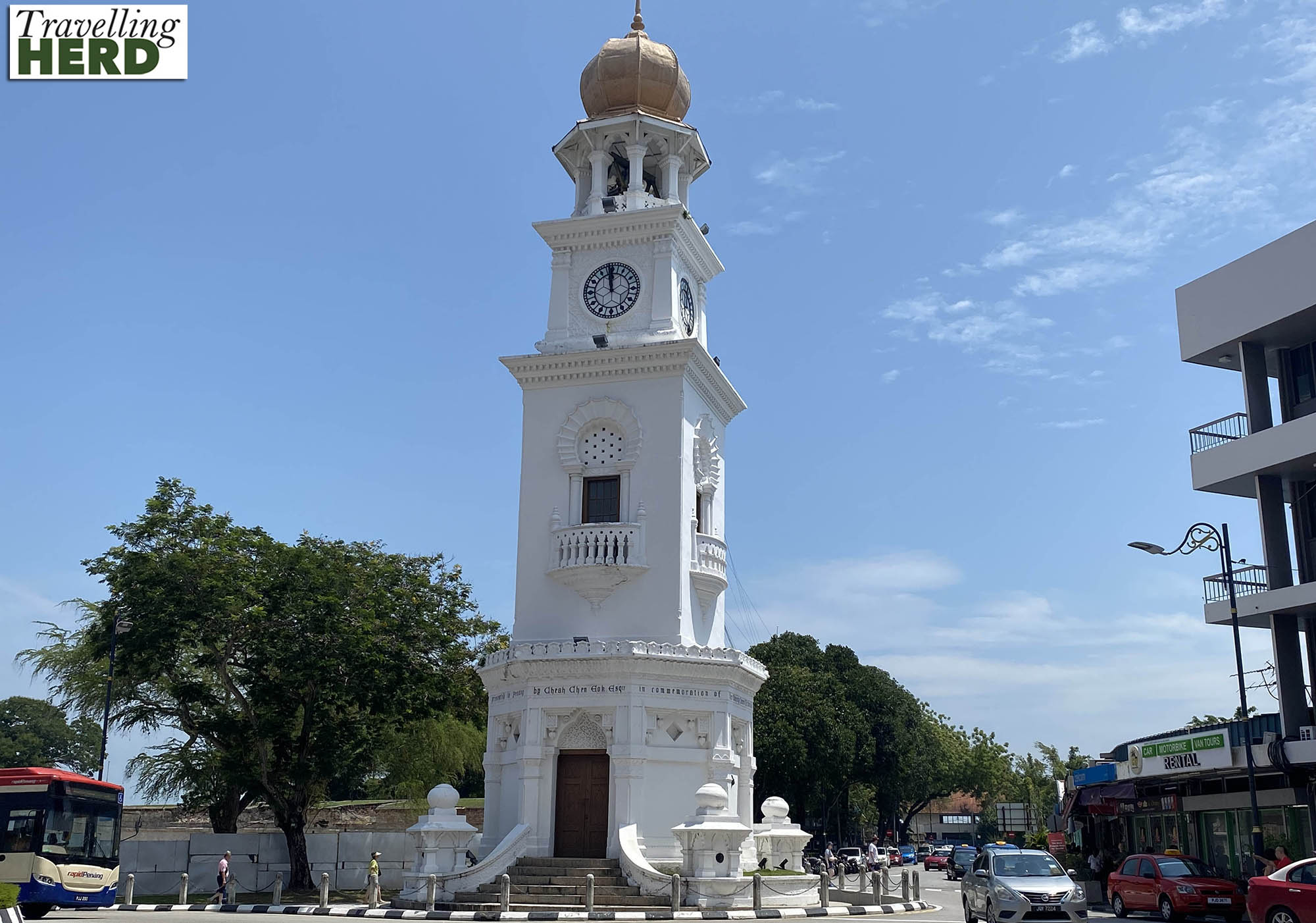
From here we walked to Little India.
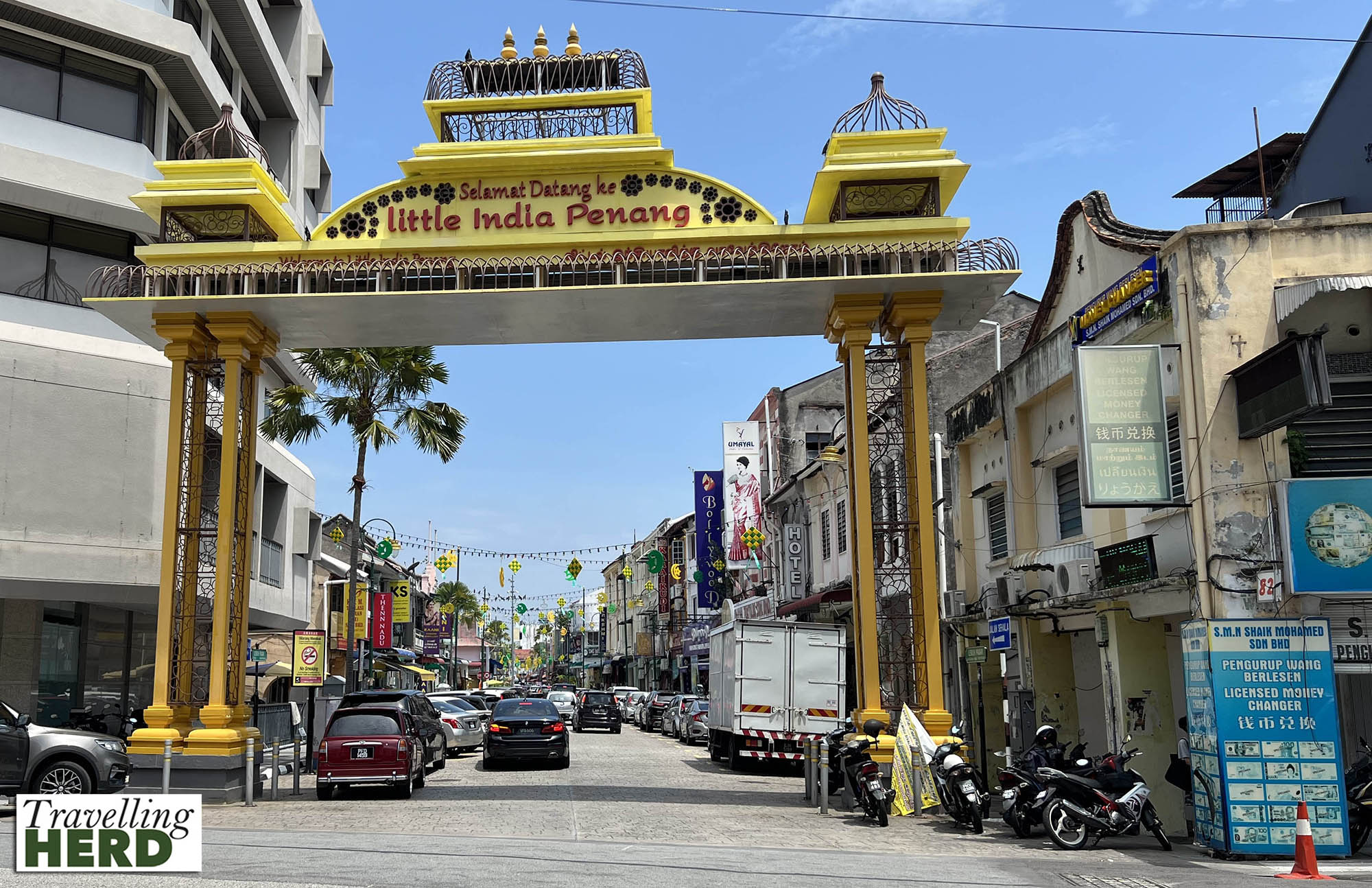
This was established in the 19th century during the British Colonial era when labourers from India were brought to Penang to work. Gold jewellery and bright clothing are everywhere and the air is fragrant with the scent of spices.
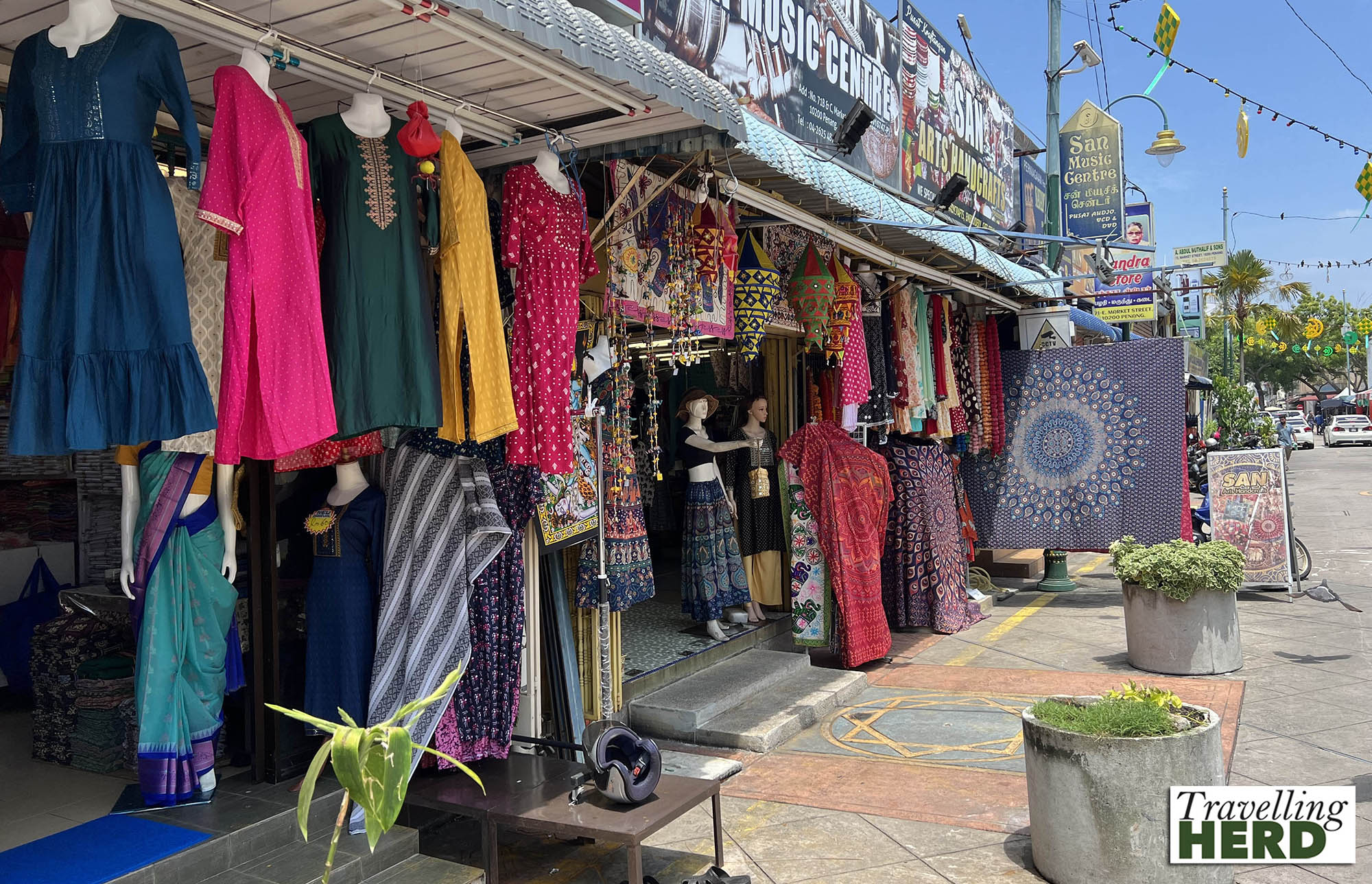
The Kapitan Keling Mosque dates from the early 1800s and was the first permanent Muslim institution to have been established in the area. The current building is the result of renovations and an extension in the 1930s.
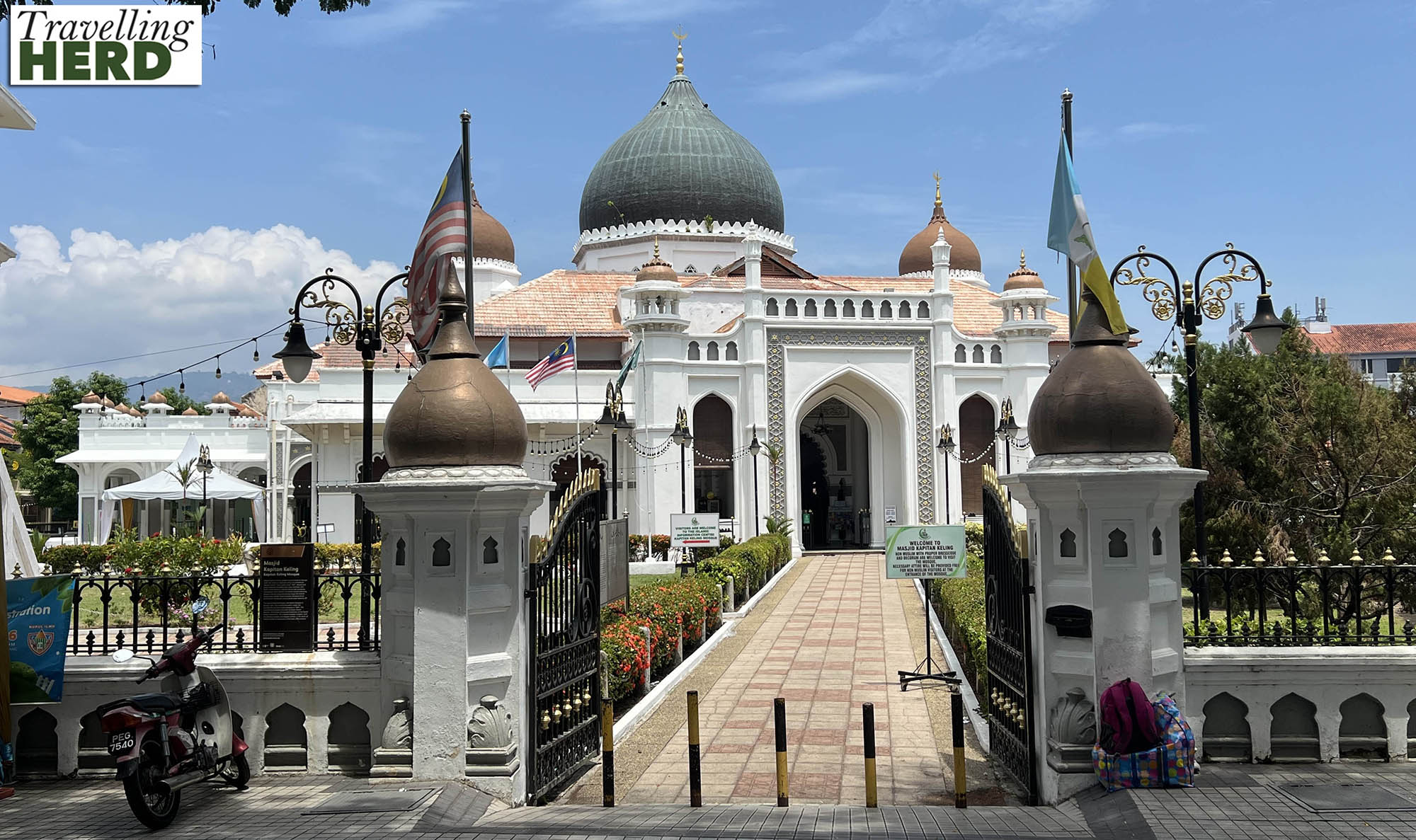
Matilda decided it was time for a refreshing soak in the bath. Although it was very relaxing, she did feel guilty about the amount of water needed to fill such a large tub.
Meanwhile Robert opted for a different sort of refreshment. When Matilda went to find him, rain was forecast and the skies started to look very threatening. She managed to find him and take cover before the deluge. Two women, less fortunate than us came into the bar absolutely soaked through and the owner kindly gave them both a promotional T shirt to change into. Robert tried unsuccessfully to blag himself one.
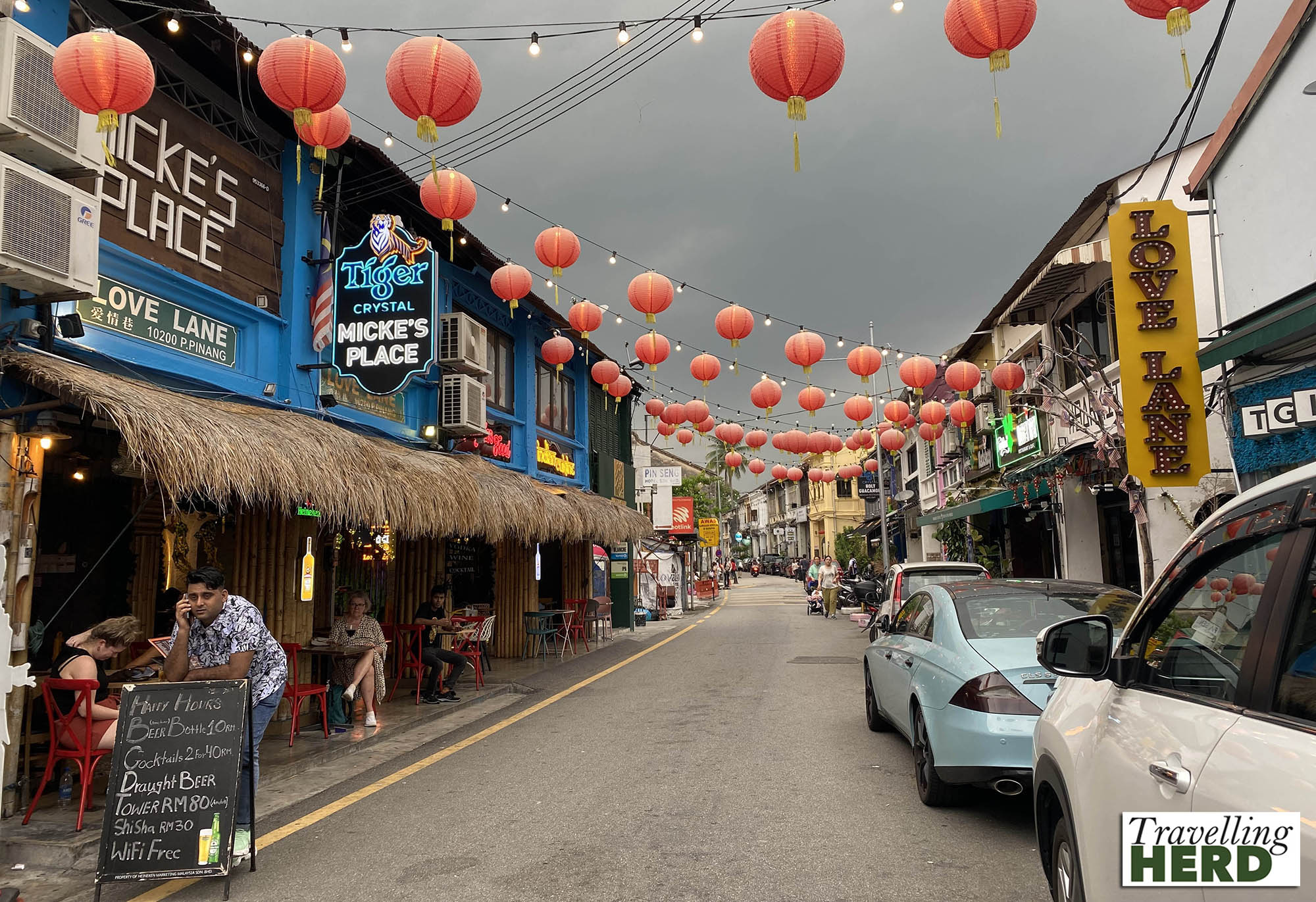
We returned to Wheeler’s to eat as Matilda had spotted something on the menu which she wanted to try: Espresso Chicken. The breakfast had been exceptionally good – see Dish of the day. The menu described Espresso Chicken as pan fried thinly flour battered chicken, mashed potato, buttered vegetables, asparagus, espresso coffee and creamy
sweet white sauce. She had been expecting the sauce to be creamy with a hint of coffee but when it arrived there was a shot of espresso on the side as a dipping sauce. She was not entirely convinced this worked.

The following morning we went to Tease and Toss for a change for breakfast where there was quite an interesting take on the “full English”.
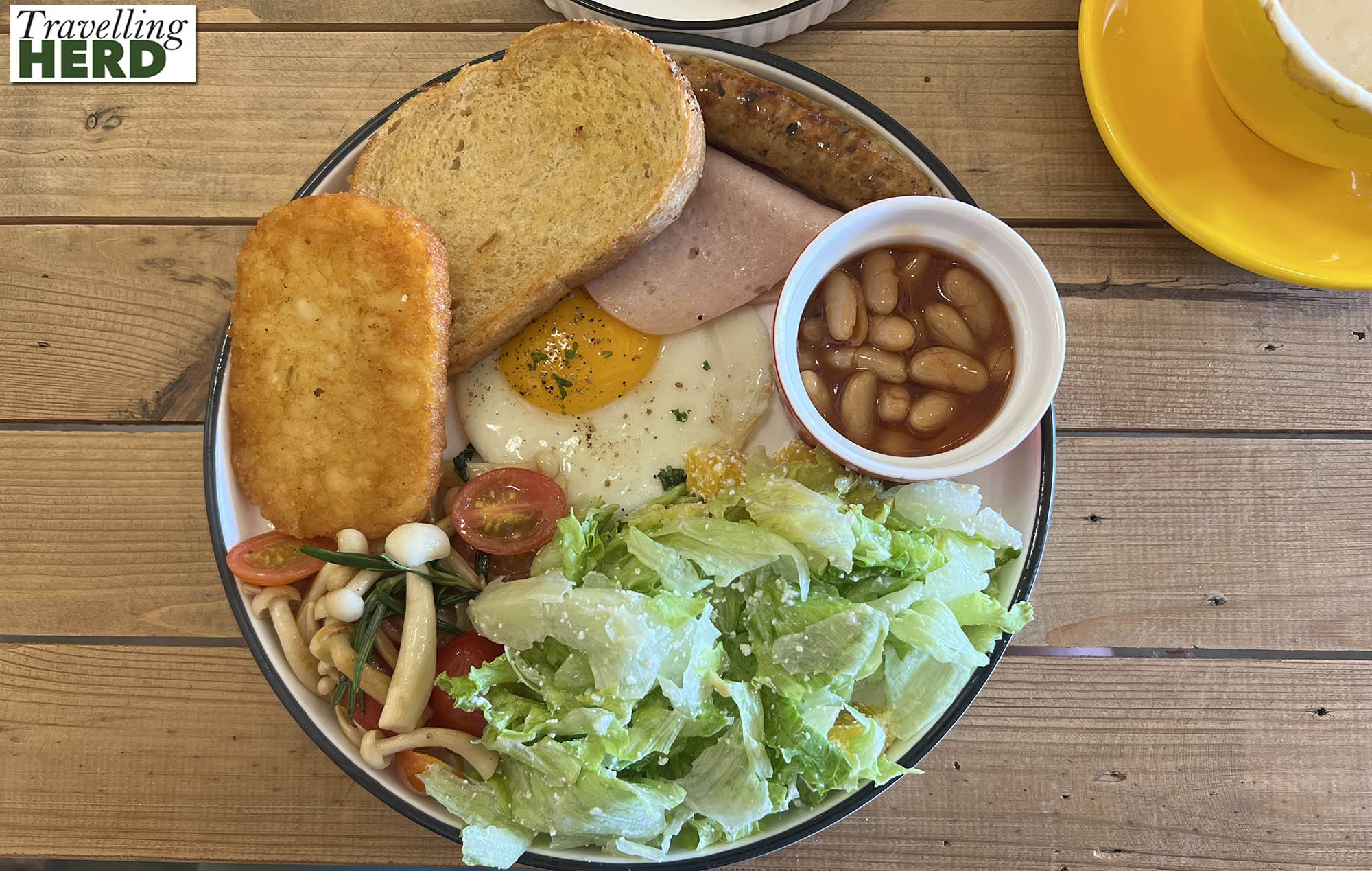
Matilda chose avocado on sourdough which came accompanied by a second slice with yoghourt and jam which had not been mentioned in the description even though it could be seen in the photo on the menu.
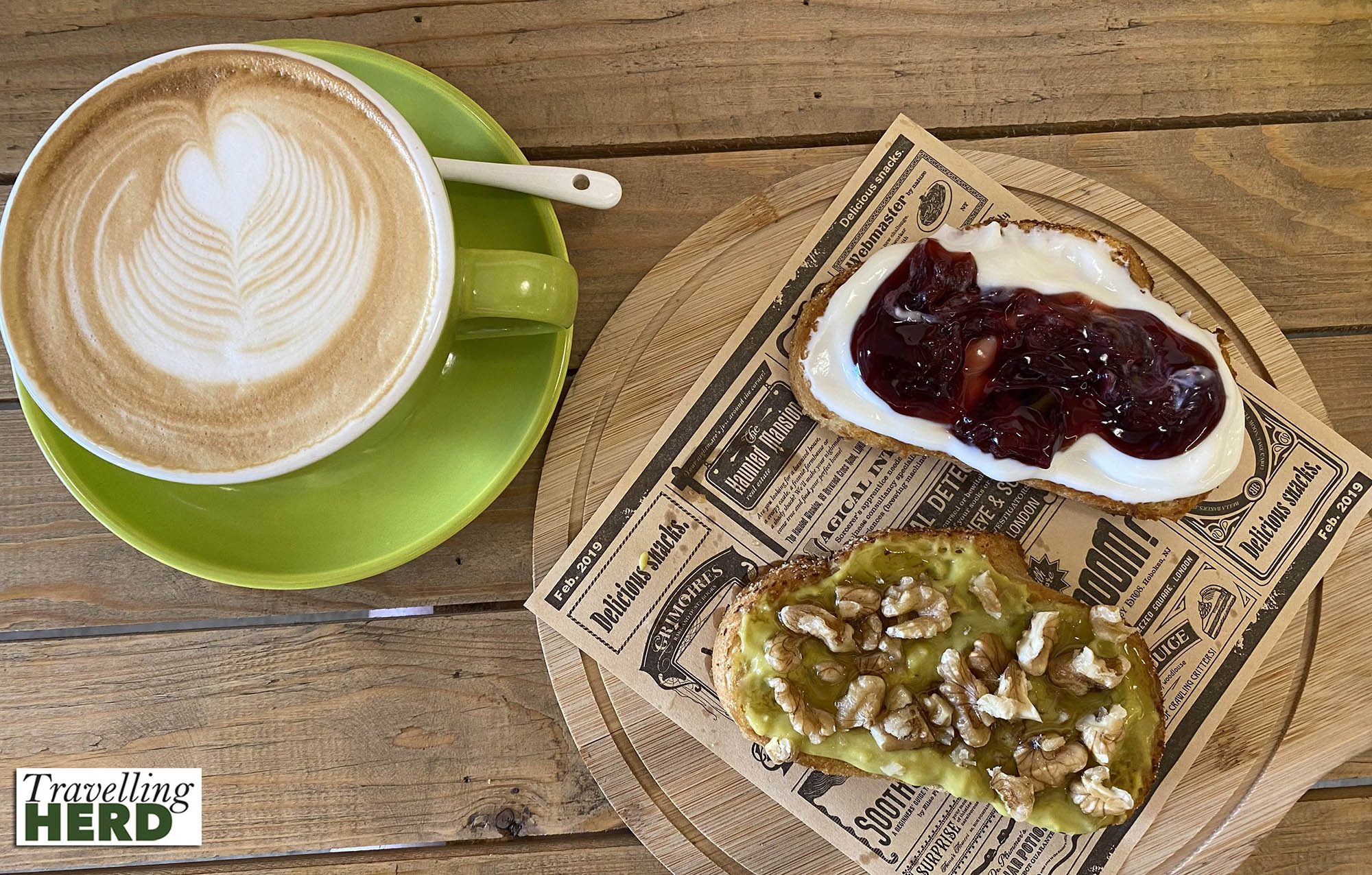
We had decided to take the funicular up to the top of Penang Hill. Little did we realise that as it was a public holiday, most of the residents of George Town would be doing the same.
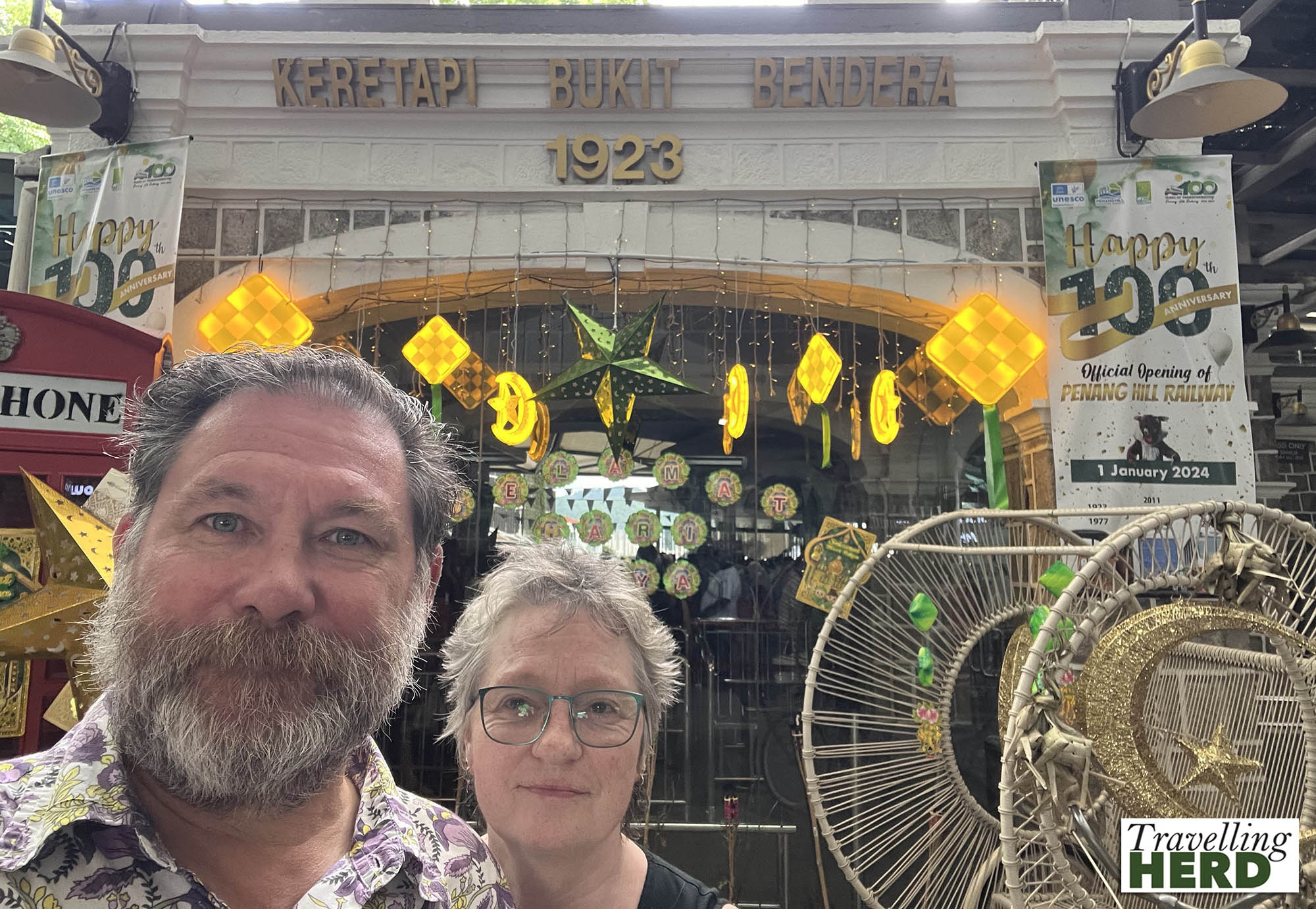
When we arrived at the bottom of the funicular around midday there were crowds waiting, both to buy tickets and to go up the hill. The queues were carefully marked out with snaking barriers and staff were ensuring that only one person in each group queued for tickets. Robert bought ours and was told that it would be about two hours before we got to the top, which proved to be quite accurate.
People were called by group number. First there was a waiting area outside in the concourse. This was followed by a tunnel with plenty of information about Penang Hill and its wildlife and biodiversity. Unfortunately we moved relatively quickly through this area so did not have time to read everything.
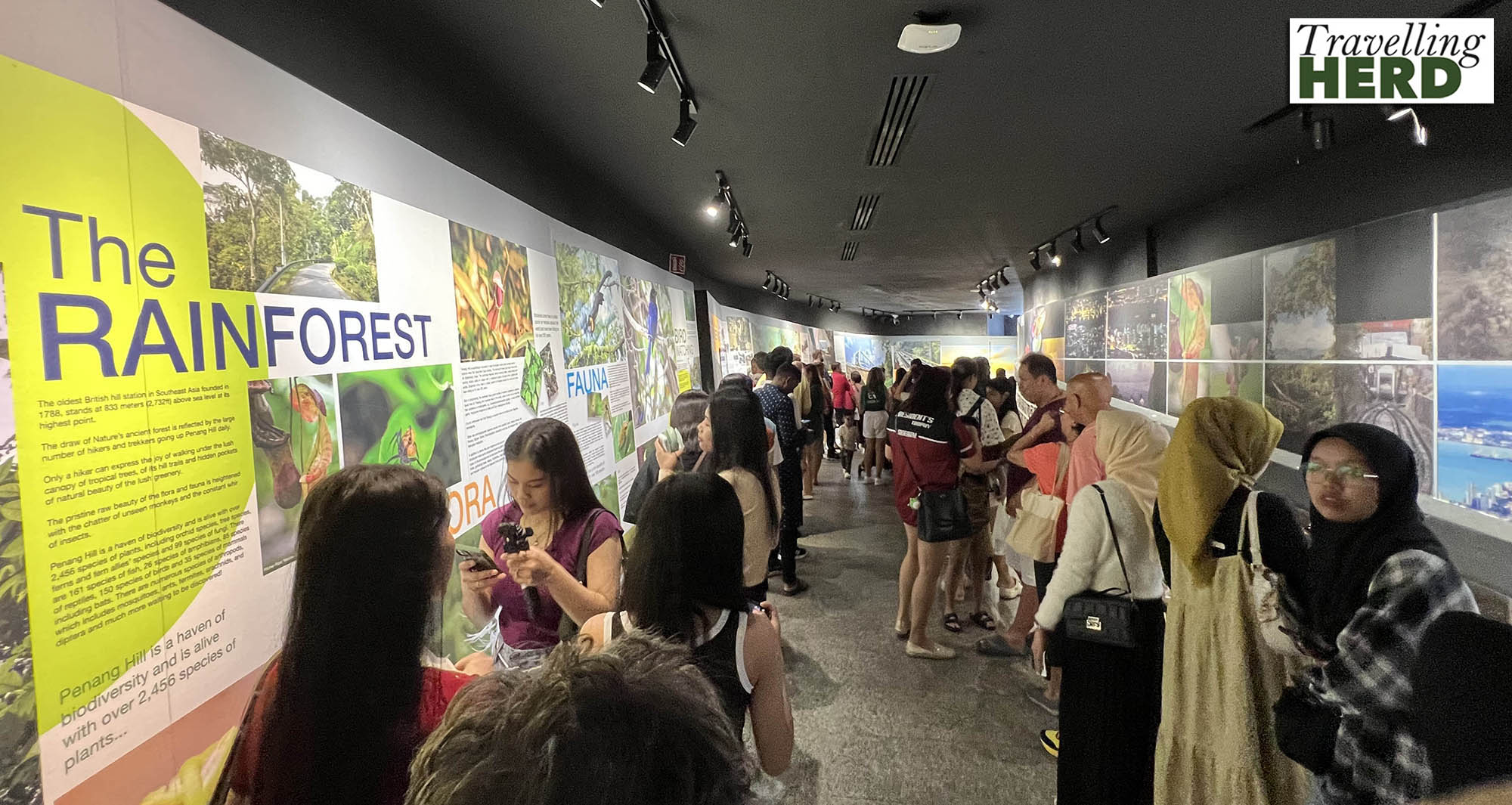
We were lucky enough to get on in the first carriage, right behind the driver so we had an excellent vantage point for the ascent.
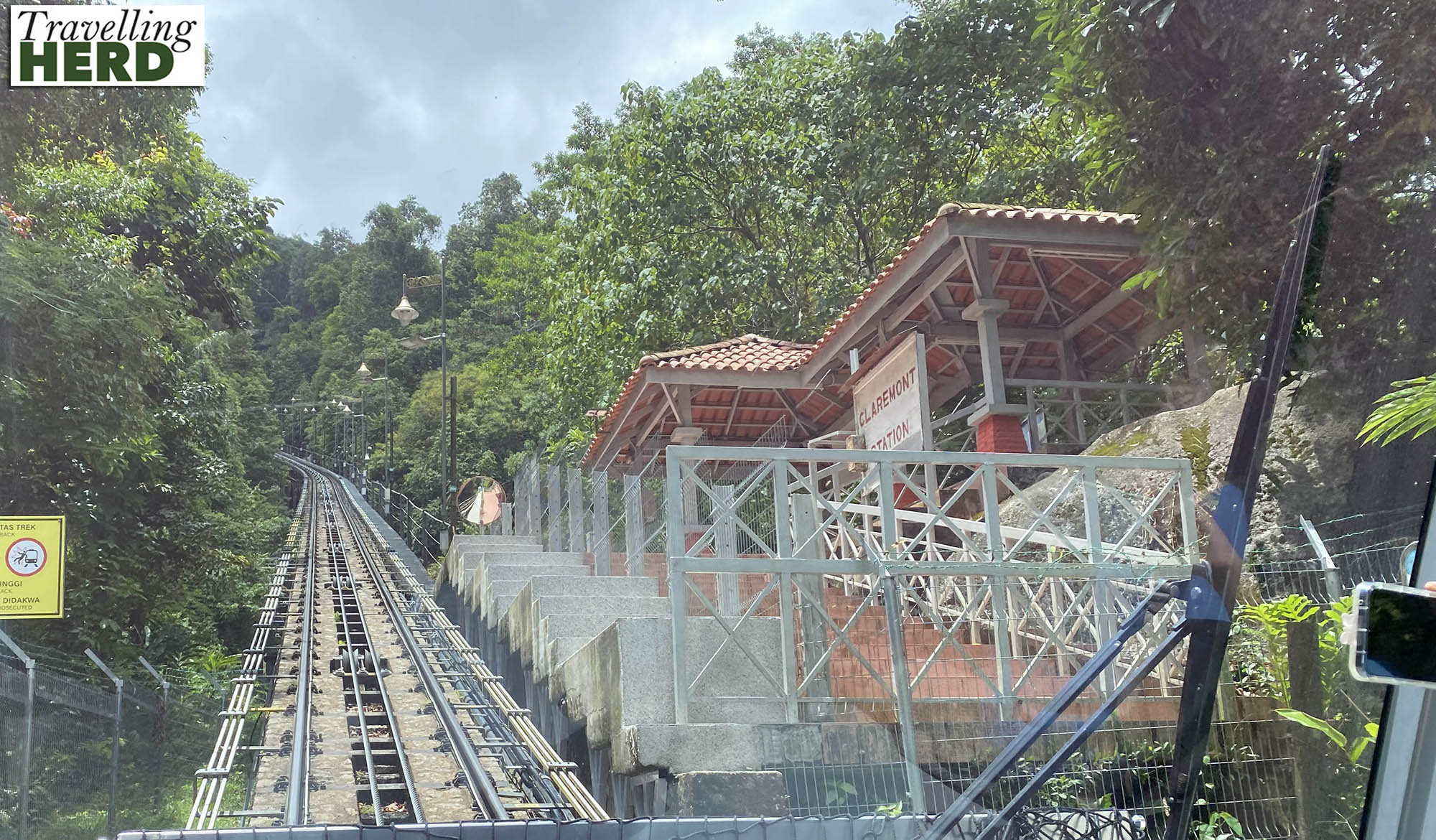
The engineer, surveyor and architect, Arnold Robert Johnson [1879-1966] was sent to Switzerland to learn about funicular design and how to overcome the challenges of the terrain on Penang Hill which included irregular slopes, deep ravines and large boulders.
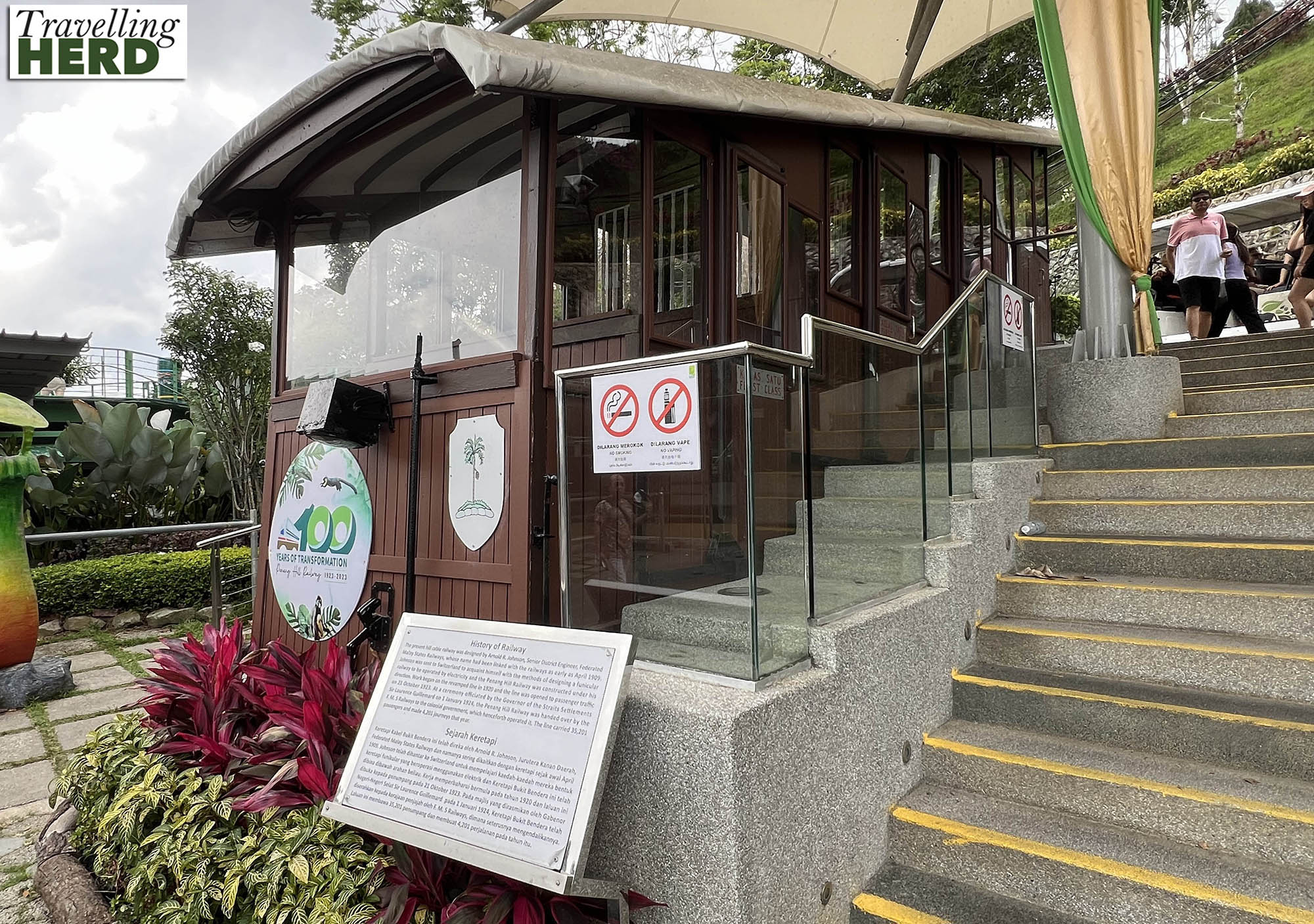
The Federated Malay States Railways started building the Penang Hill Funicular Railway in 1920 and it was completed in 1923. It boasts the steepest railway tunnel in the world.
Penang Hill is the oldest British hill station in Southeast Asia and the only hill station with a funicular railway in Malaysia. Now it has more modern buildings as well as The Habitat rainforest discovery centre.
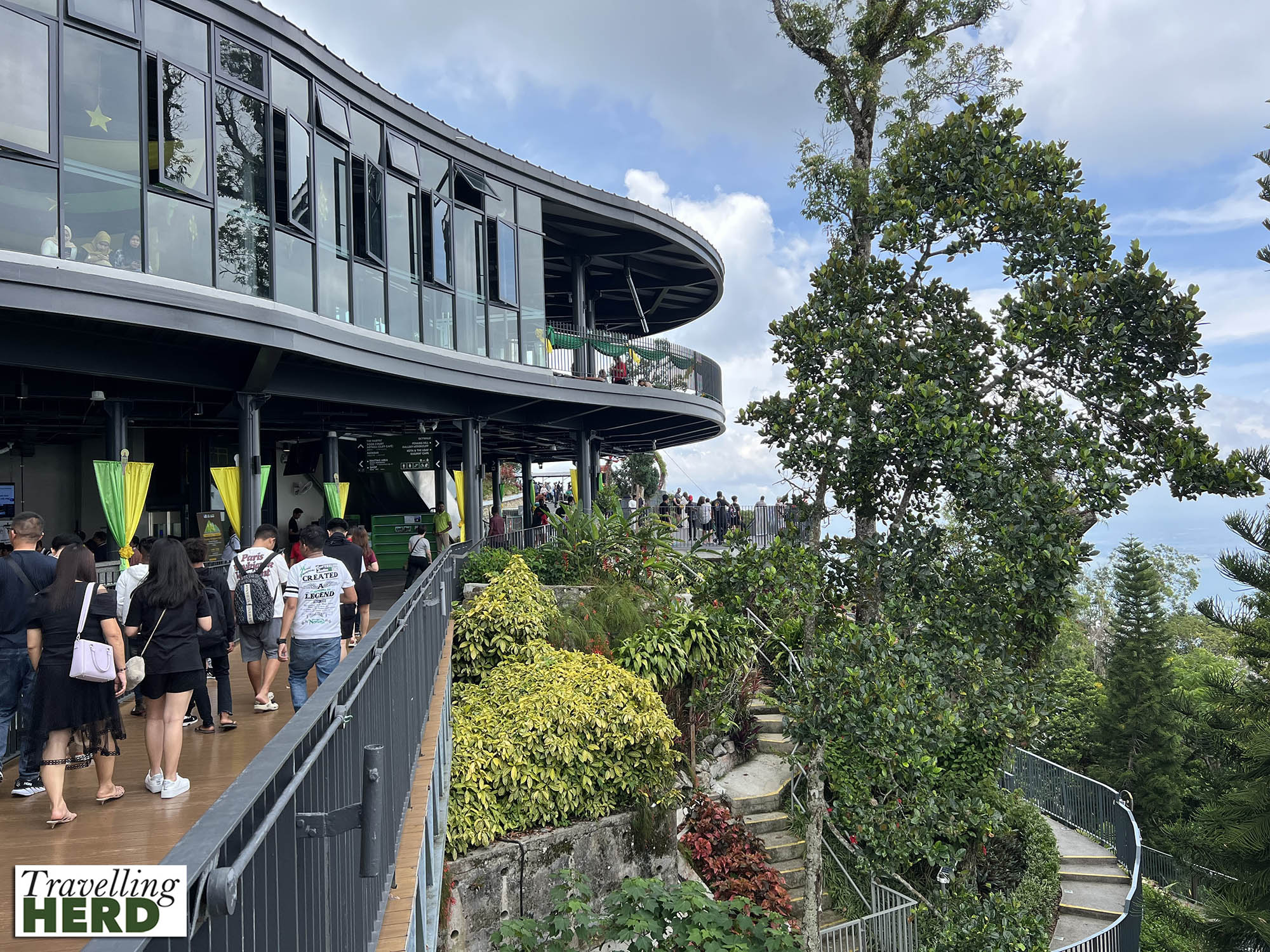
At its highest point, Penang Hill is 2,732ft [833 meters] above sea level and offers spectacular views across to the mainland [see Selfie of the day].
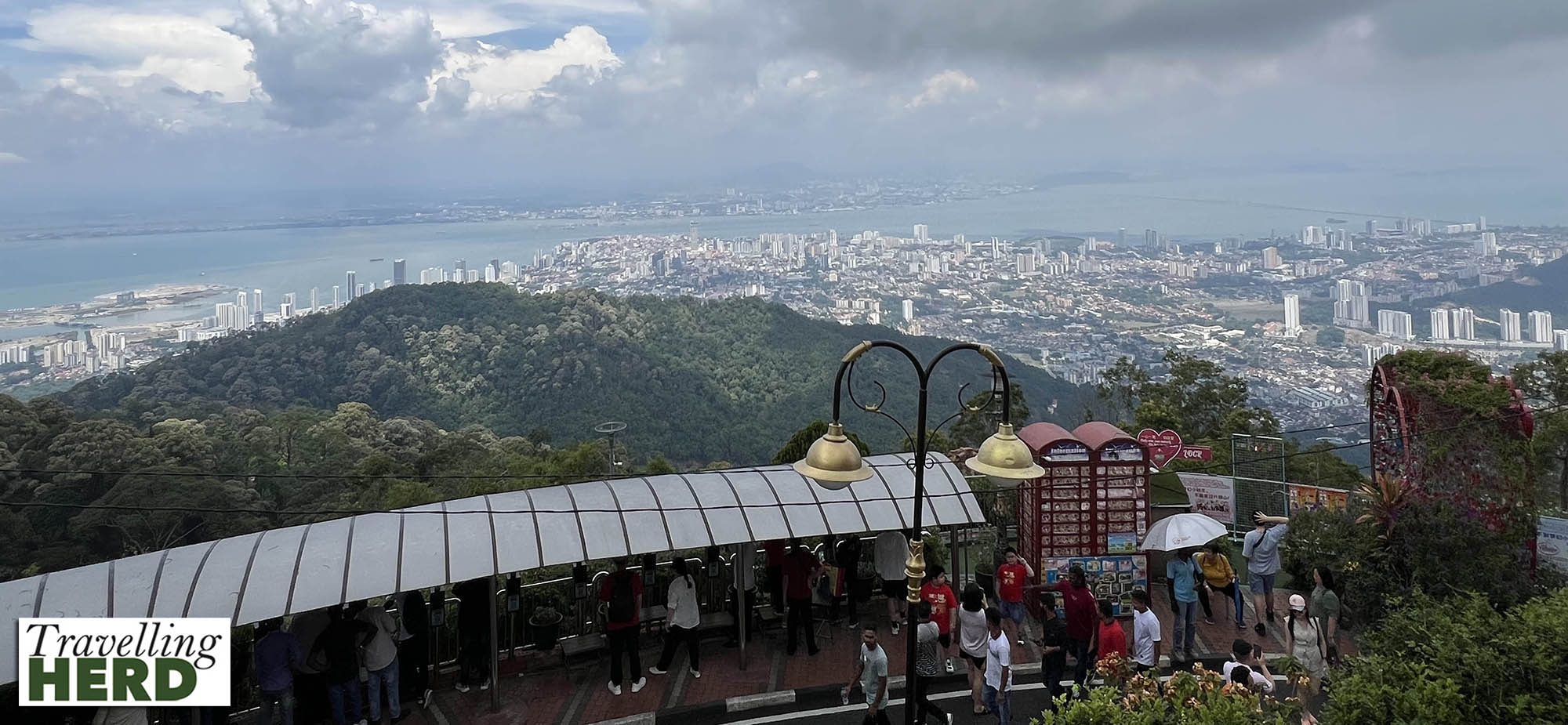
There were queues to descend as well and once again, people are allocated a batch number to be able to catch the funicular back down the hill, although not everyone seemed to understand the system.
We were also lucky to be directed to the lower car on the return journey so once again we had the best view as we went down through the steepest railway tunnel in the world [see also Video of the Day].
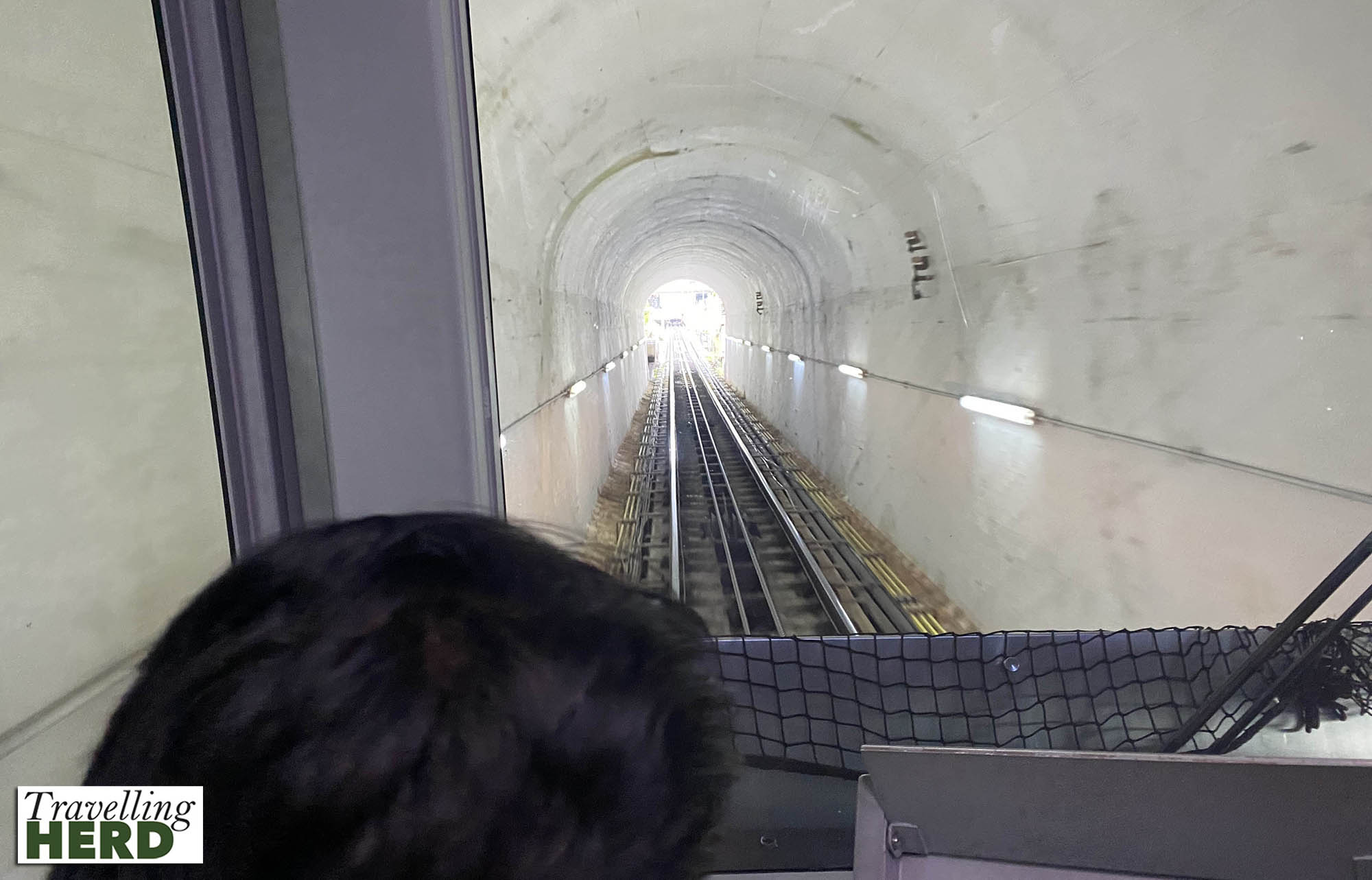
The journey down, with gravity on our side, was much more rapid than the ascent.
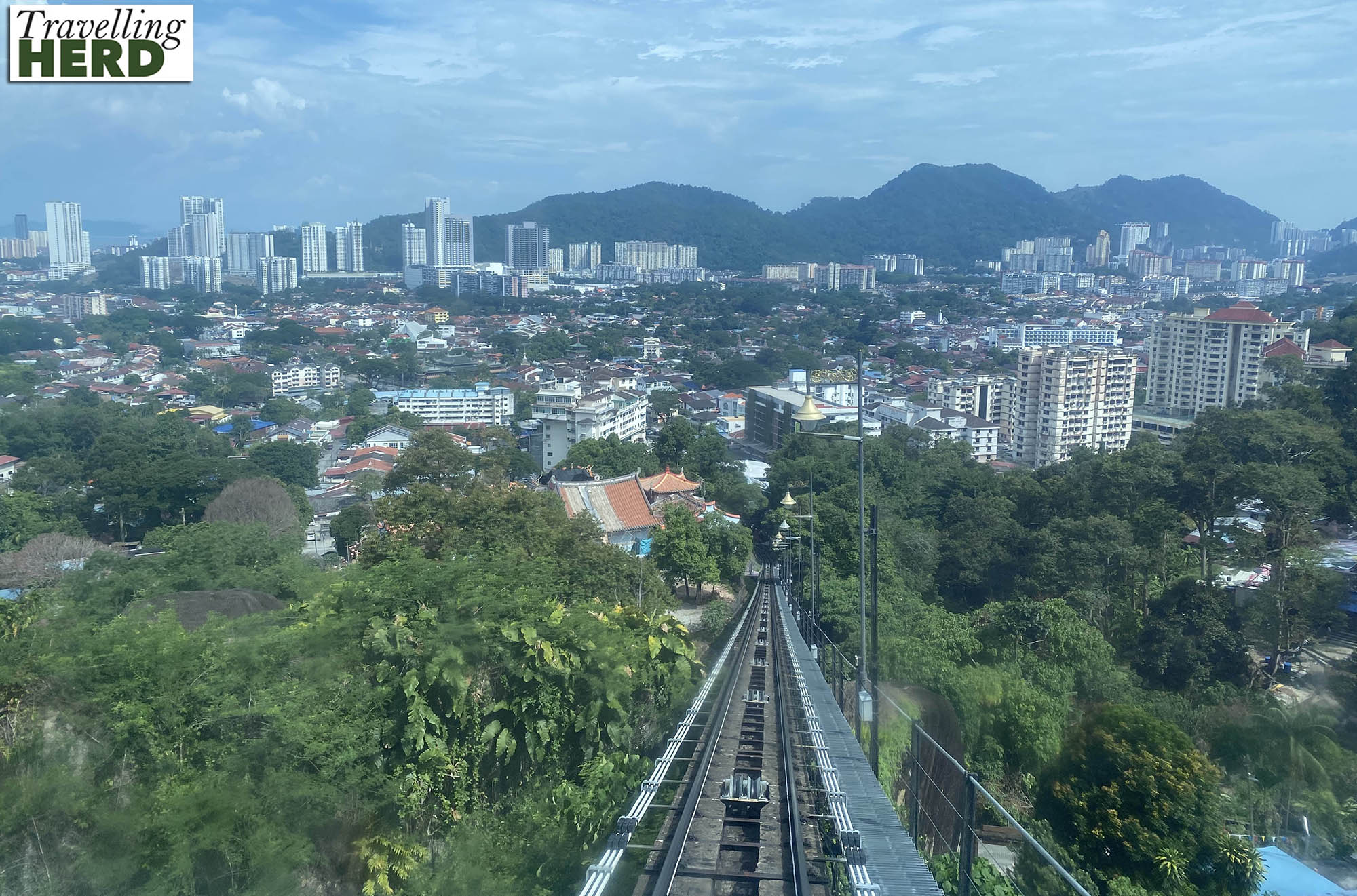
We got a Grab back from the funicular and our driver was very chatty and informative. He recommended eating at the Red Garden Food Paradise.
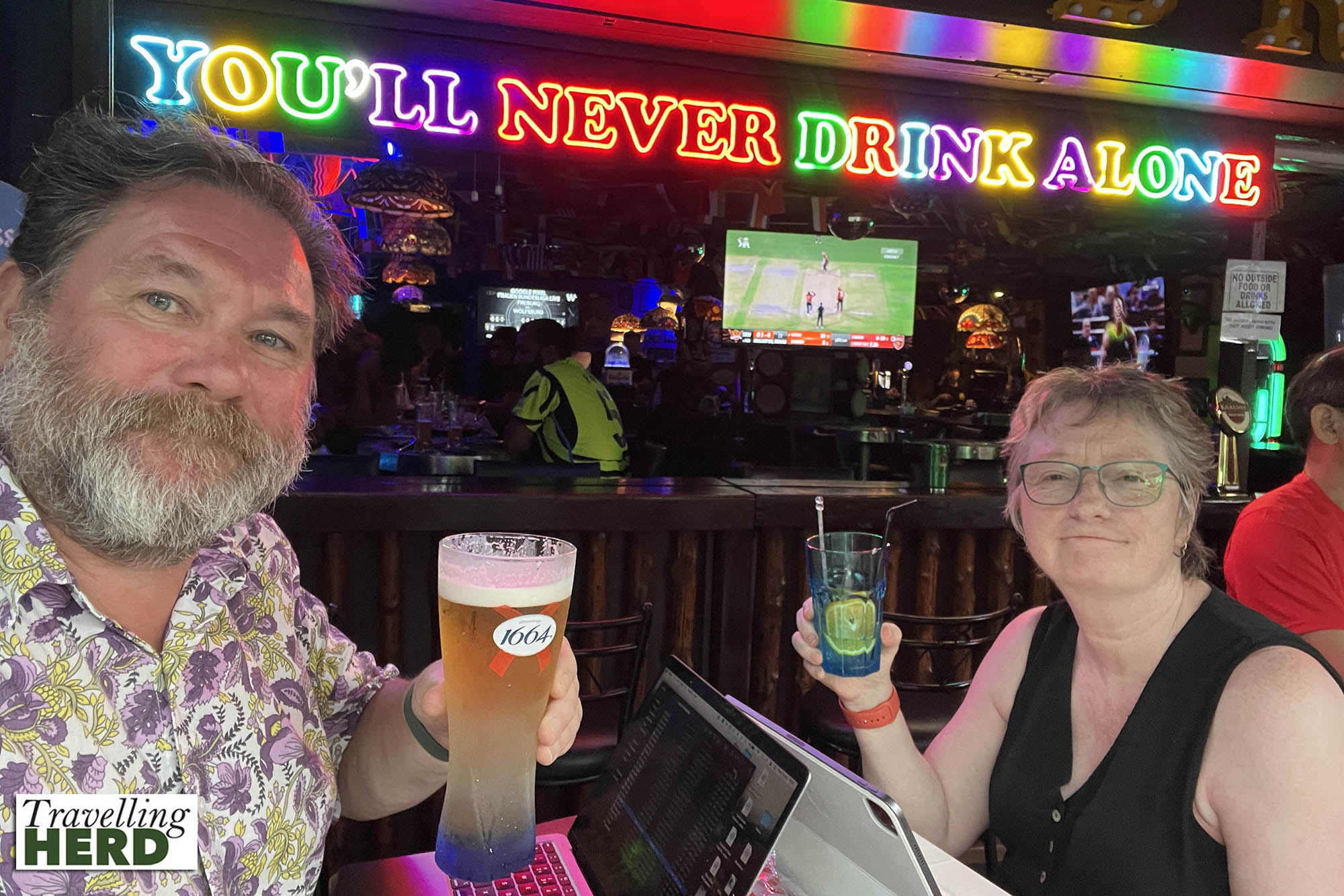
First we went for a drink and this time, even though it wasn’t actually raining the owner did give Robert a free promotional T shirt.
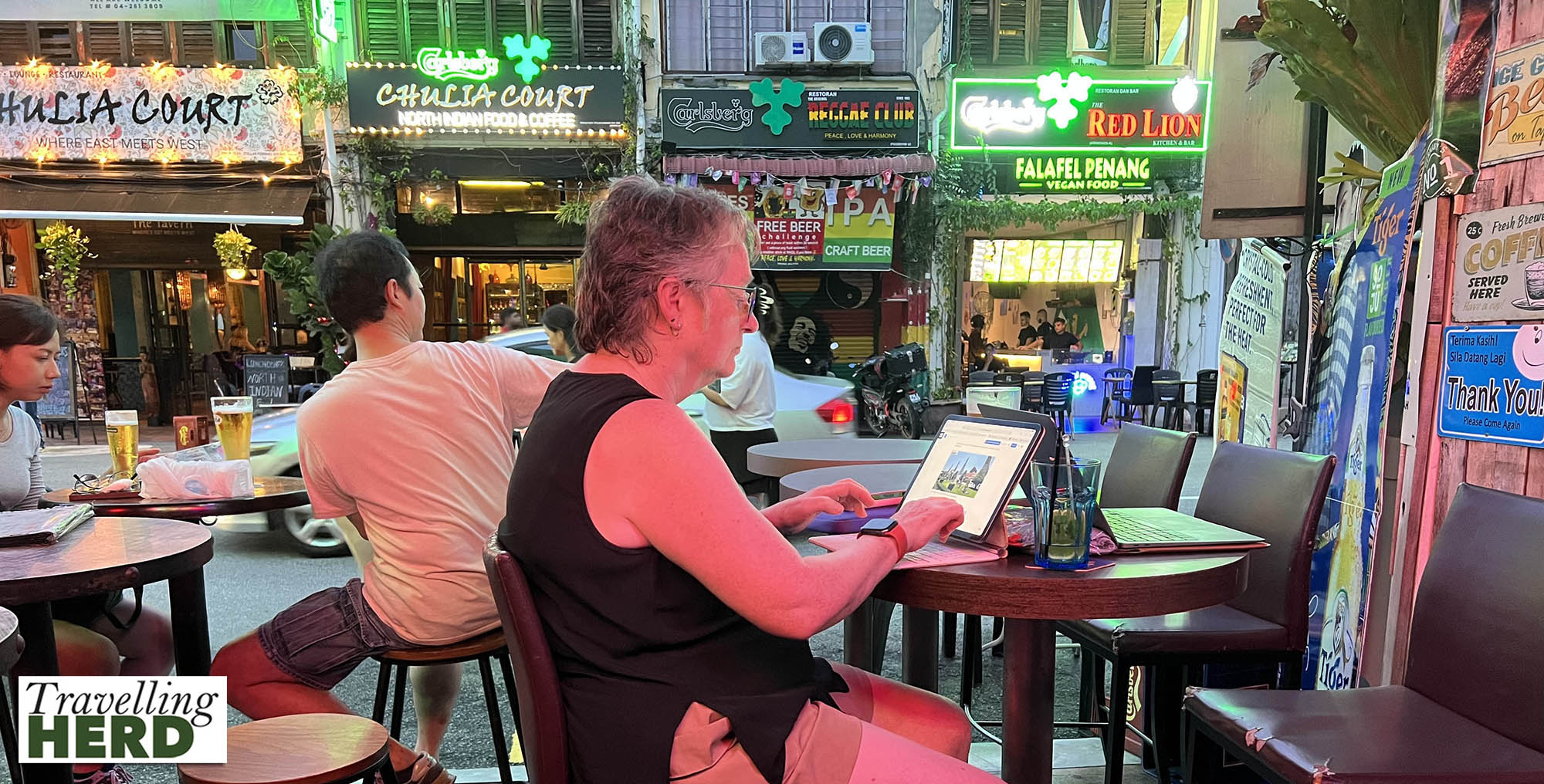
The Red Garden Food Paradise, was very close to our hotel and proved to be a real find.
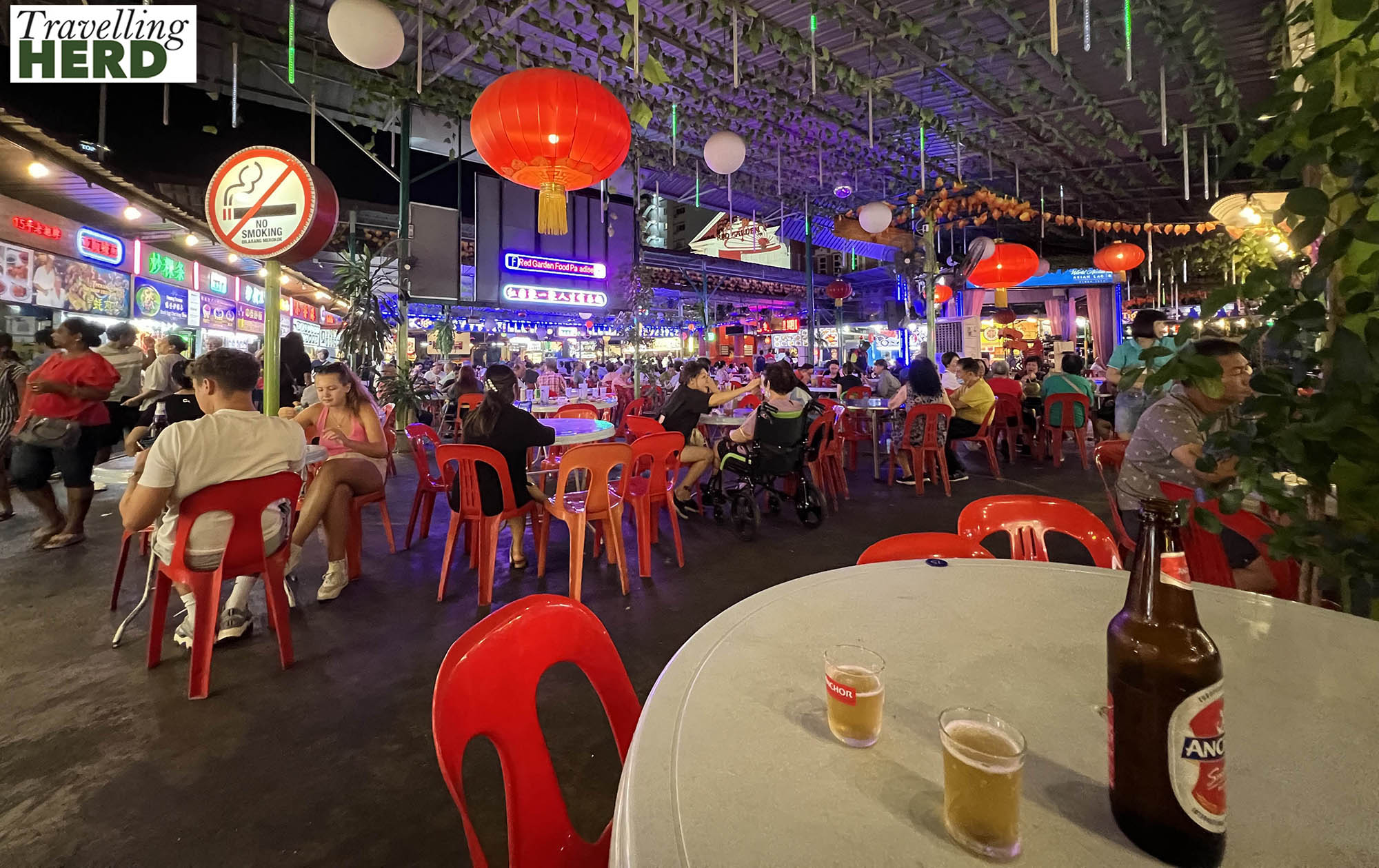
It was a night market with stalls serving a wide range of tasty food very cheaply. Tables were numbered and food would be delivered to you from any and whichever stall you chose to order from.
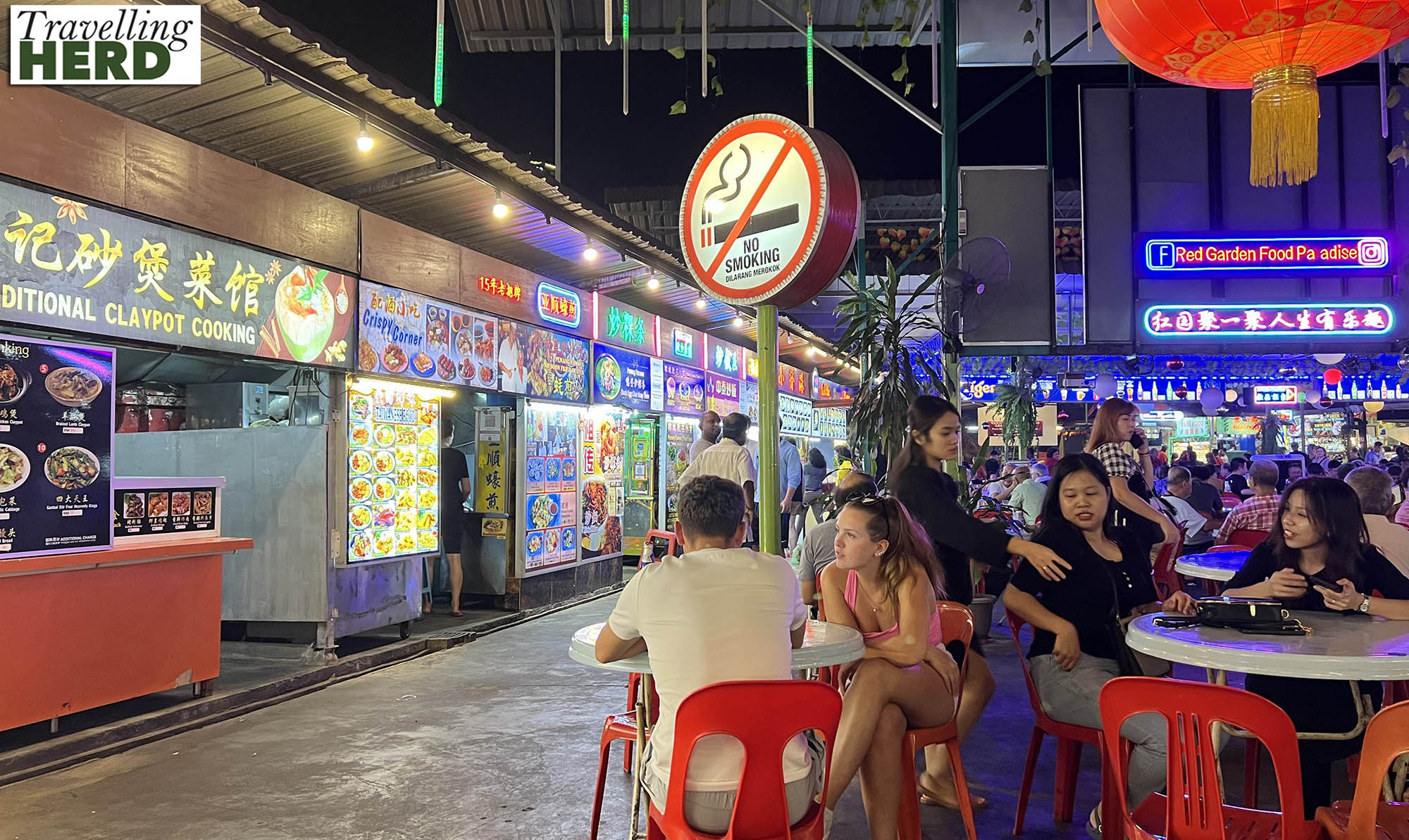
Robert opted for crab stick noodles which came on a sizzling hot plate which he enjoyed but still felt that the breakfast from the day before deserved the accolade as Dish of the day.

Video of the day:
Selfie of the day:
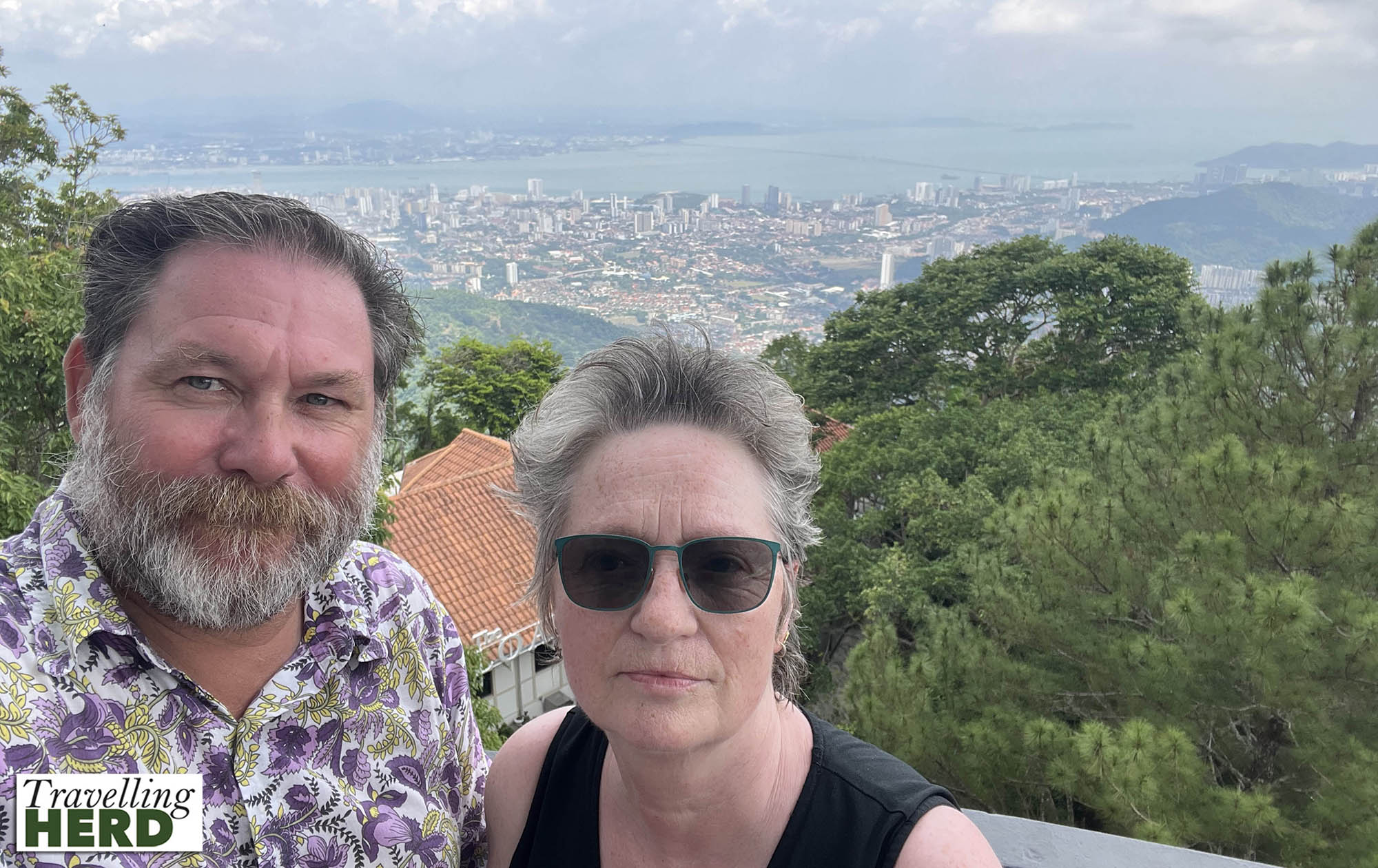
Dish of the day:

Route Map:
